Creating the perfect study room isn't just about setting up a desk and chair; it's about crafting a space that inspires focus, boosts productivity, and feels uniquely yours. Whether you're a student tackling assignments or a professional working from home, the right environment can make all the difference. From maximizing natural light to adding touches of greenery, the details of your study space shape how well you concentrate and stay motivated. Let's explore 25 clever study room design ideas to turn any corner into a powerful workspace that truly works for you.
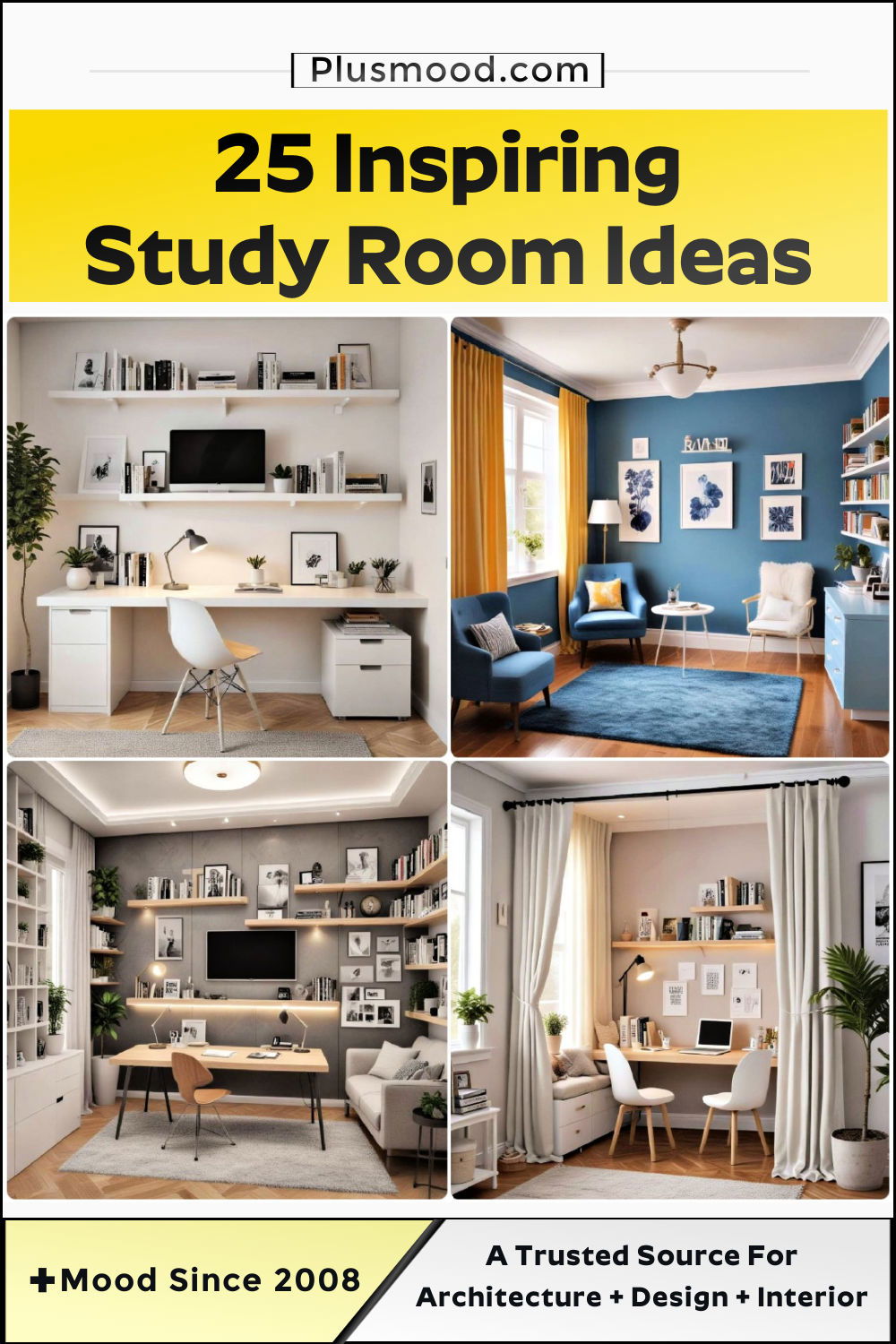
1. Natural Light Maximization
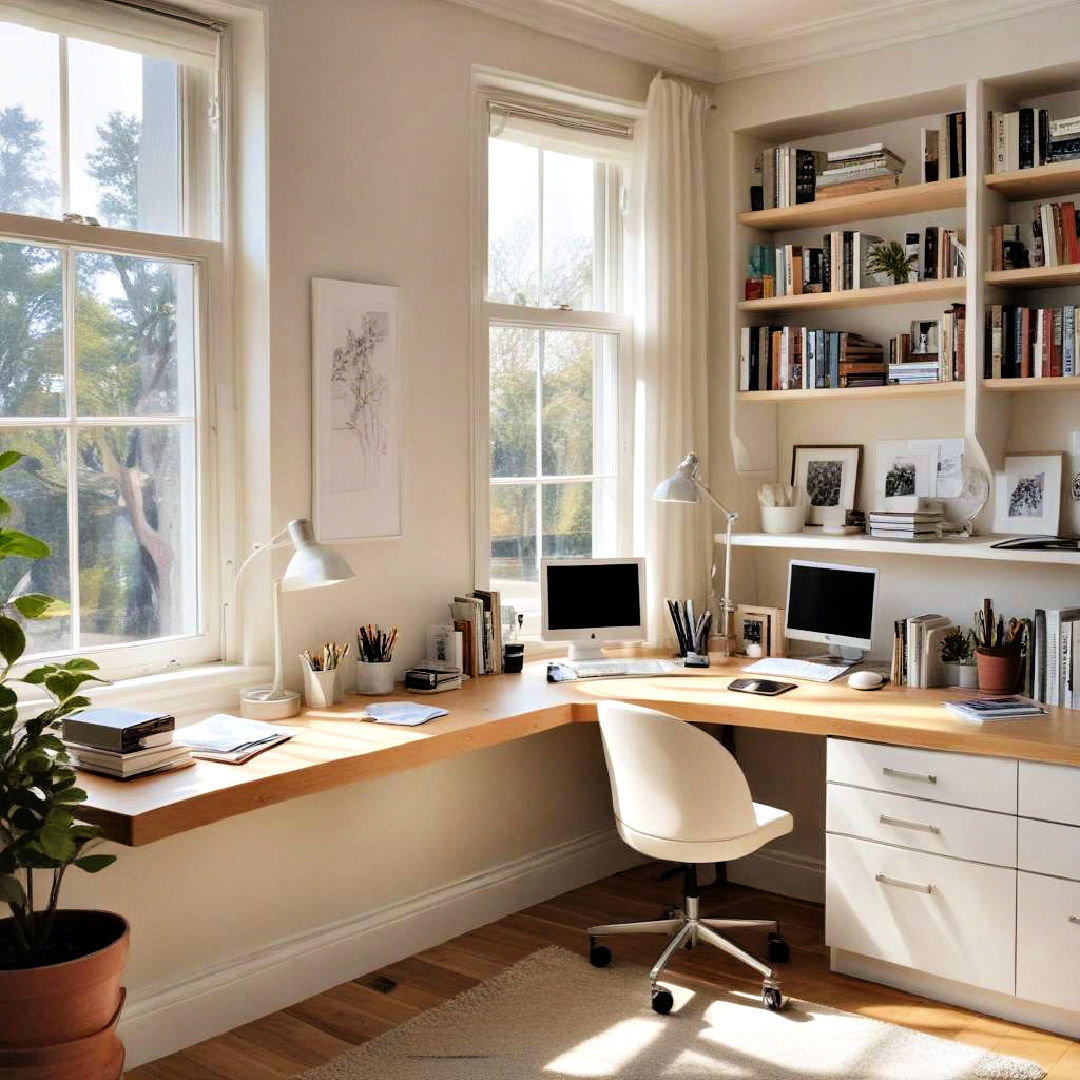
Imagine your study room bathed in natural light. Position your desk near a window to minimize eye strain and boost productivity. Using light, sheer curtains allows plenty of sunshine while reducing glare. Natural light can improve mood and focus, making your study space more inviting and efficient.
2. Ergonomic Furniture
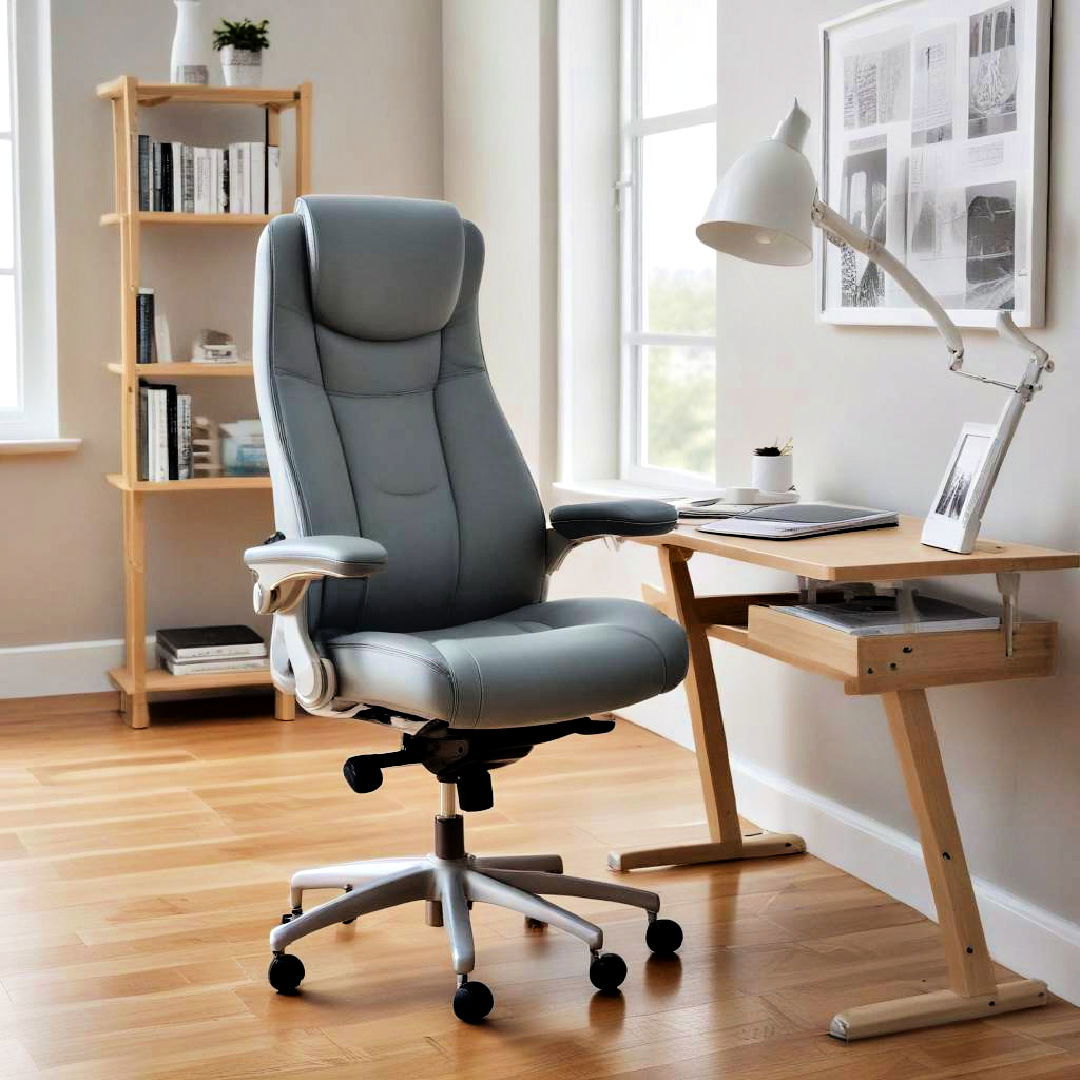
Consider investing in ergonomic furniture. A comfortable, adjustable chair and a desk positioned at the right height can prevent discomfort and health issues. Prioritize pieces that support good posture, thus enhancing concentration and reducing fatigue. Ergonomic furniture adapts to your body's needs, promoting long-term well-being.
3. Minimalist Design
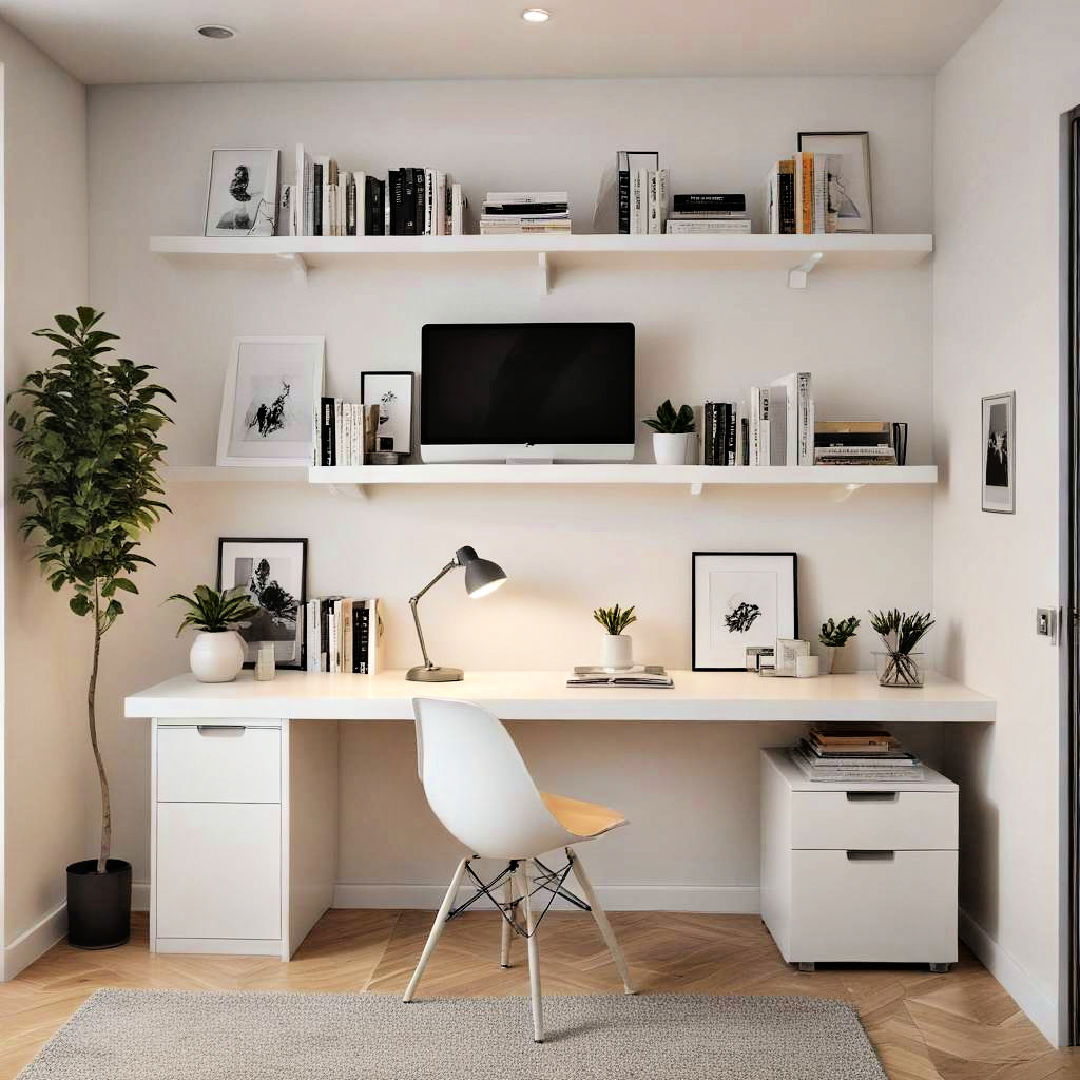
Discover functional and stylish study room design tips for a productive space. Embrace minimalist bedroom ideas to create a clutter-free and serene study environment. Use simple, clean lines and neutral colors to create a serene atmosphere. Include only essential items to avoid distractions. A minimalist approach can help clear your mind, making it easier to concentrate and boosting your study efficiency.
4. Personalized Decorations
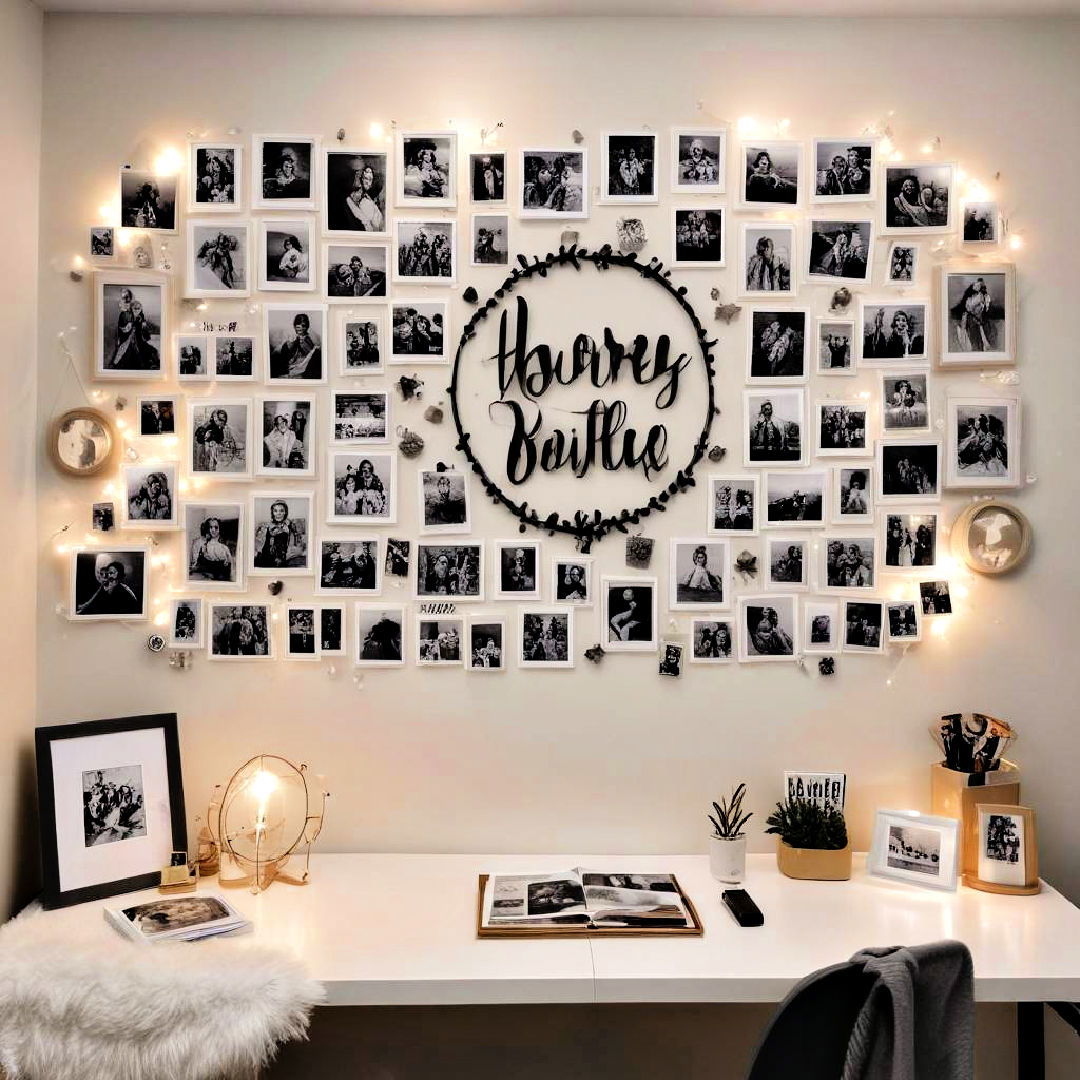
Add a touch of personality with meaningful bedroom decor ideas. Family photos, artwork, or inspirational quotes can make the space uniquely yours. These personal touches can motivate and provide comfort, fostering an environment where you feel at ease and ready to focus on your tasks.
5. Adequate Storage Solutions
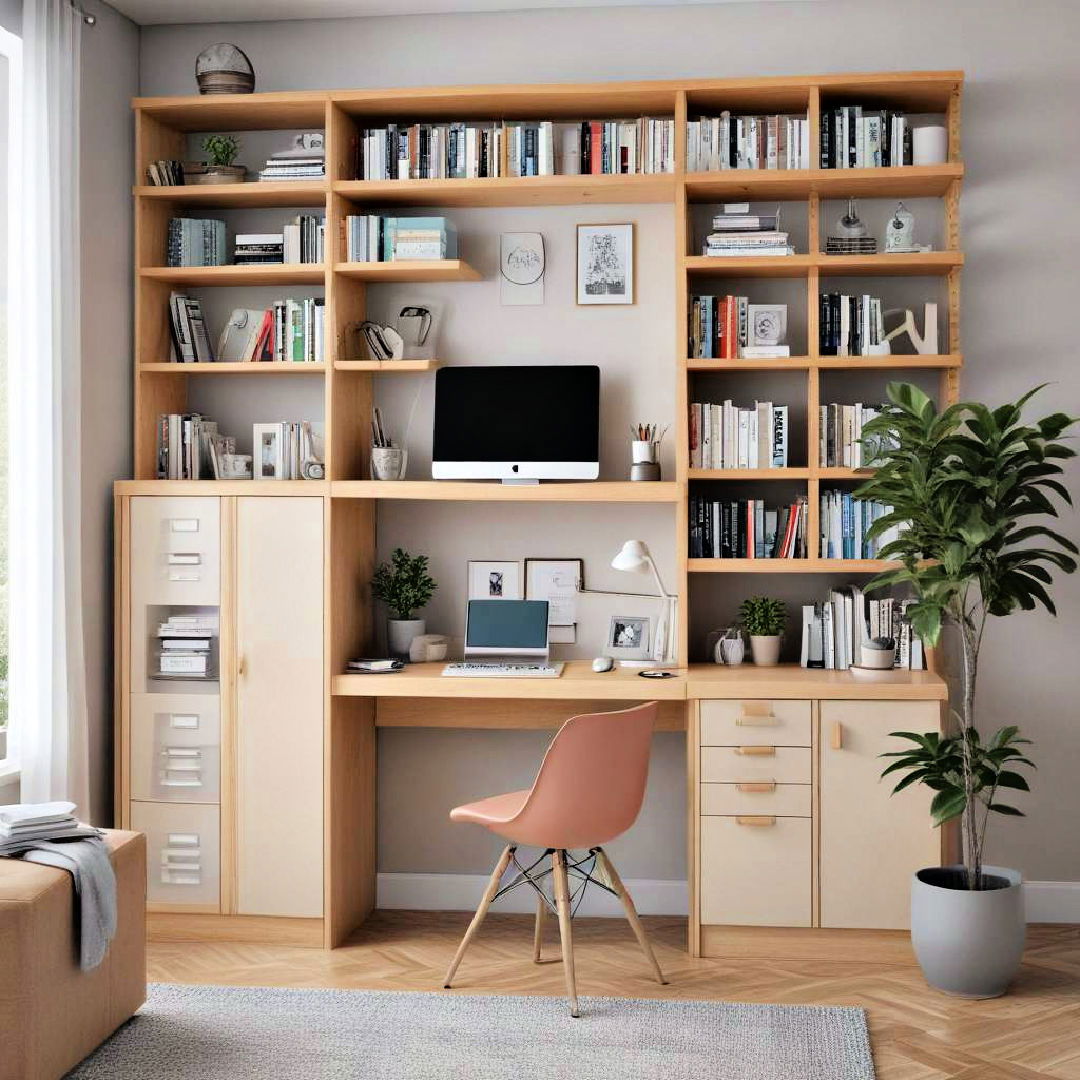
Ensure your study room has adequate storage solutions. Shelves, filing cabinets, and drawer organizers keep materials tidy and accessible. Effective storage prevents clutter, making it easier to locate supplies and maintain an organized study area, ultimately promoting a more productive workflow.
6. Noise Reduction
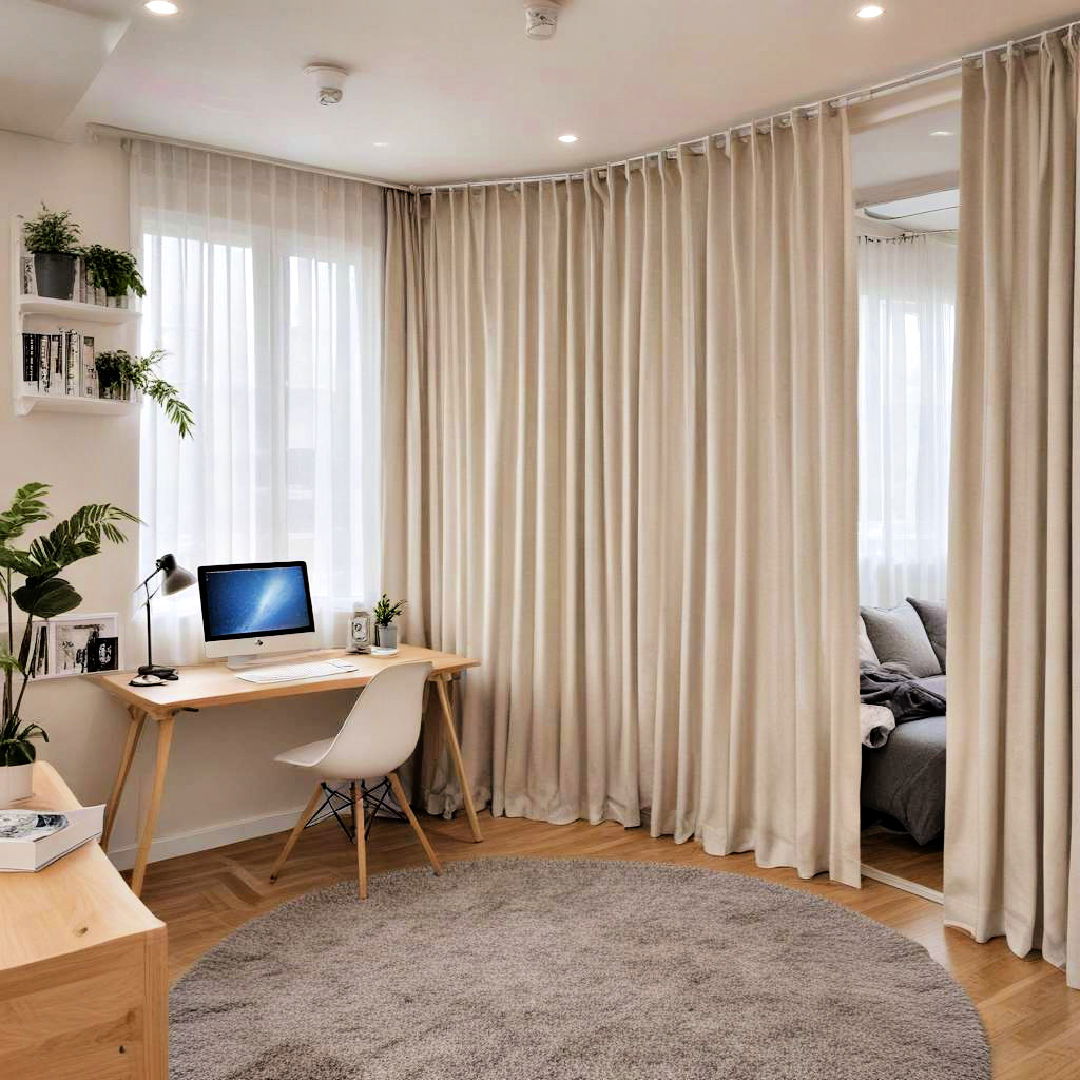
Think about noise reduction strategies to create a quiet atmosphere. Use thick curtains, rugs, and door seals to dampen sounds. Consider noise-canceling headphones or playing white noise. A quieter environment can significantly enhance concentration, allowing for more effective studying sessions.
7. Adjustable Lighting
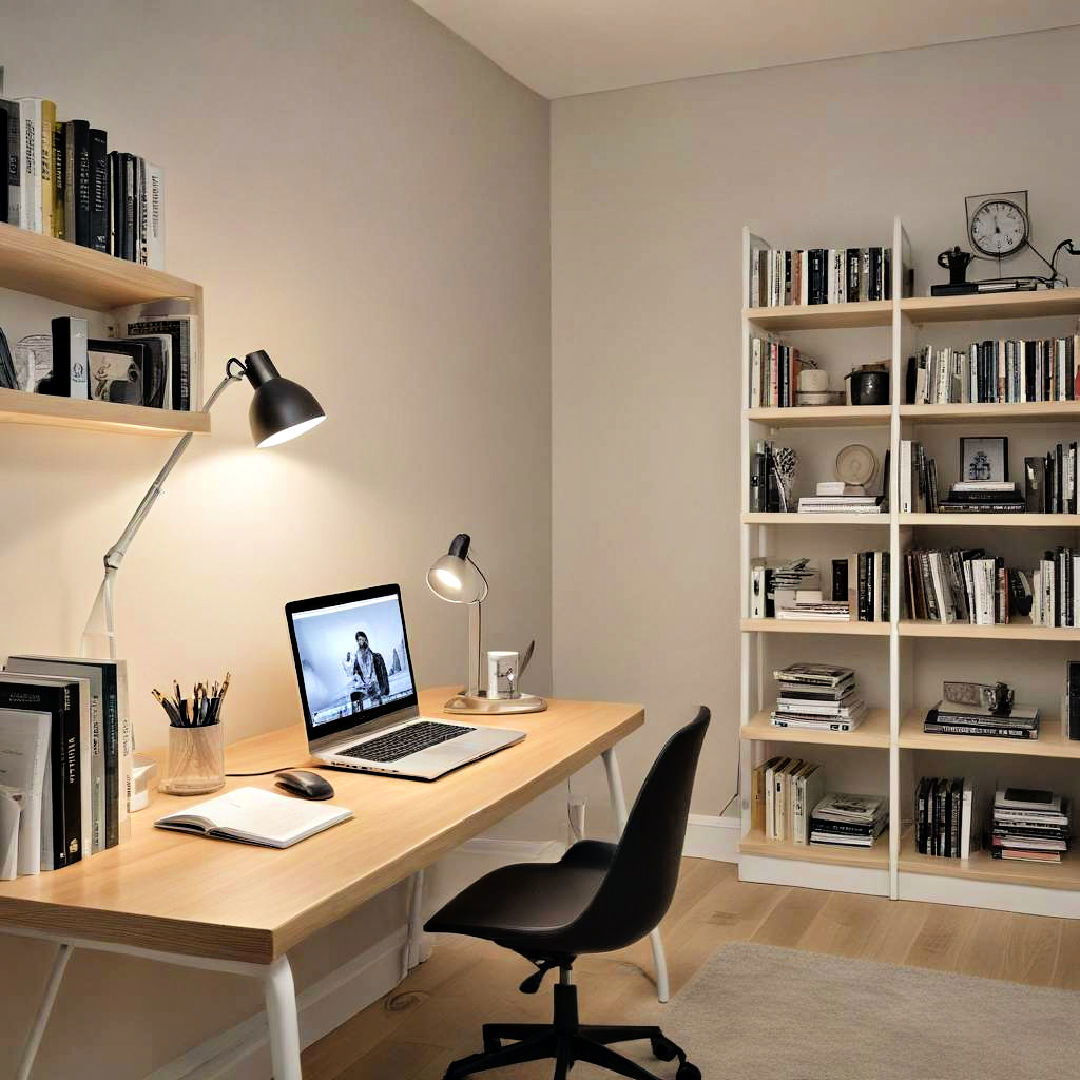
Flexible bedroom lighting ideas can make a big difference in enhancing the ambiance of your study area. Task lights like bedroom wall sconce ideas offer focused illumination for reading, while softer ambient lights create a tranquil atmosphere. Adjustable lighting can be tailored to different tasks and times of the day, enhancing comfort and productivity in your study room.
8. Greenery and Plants
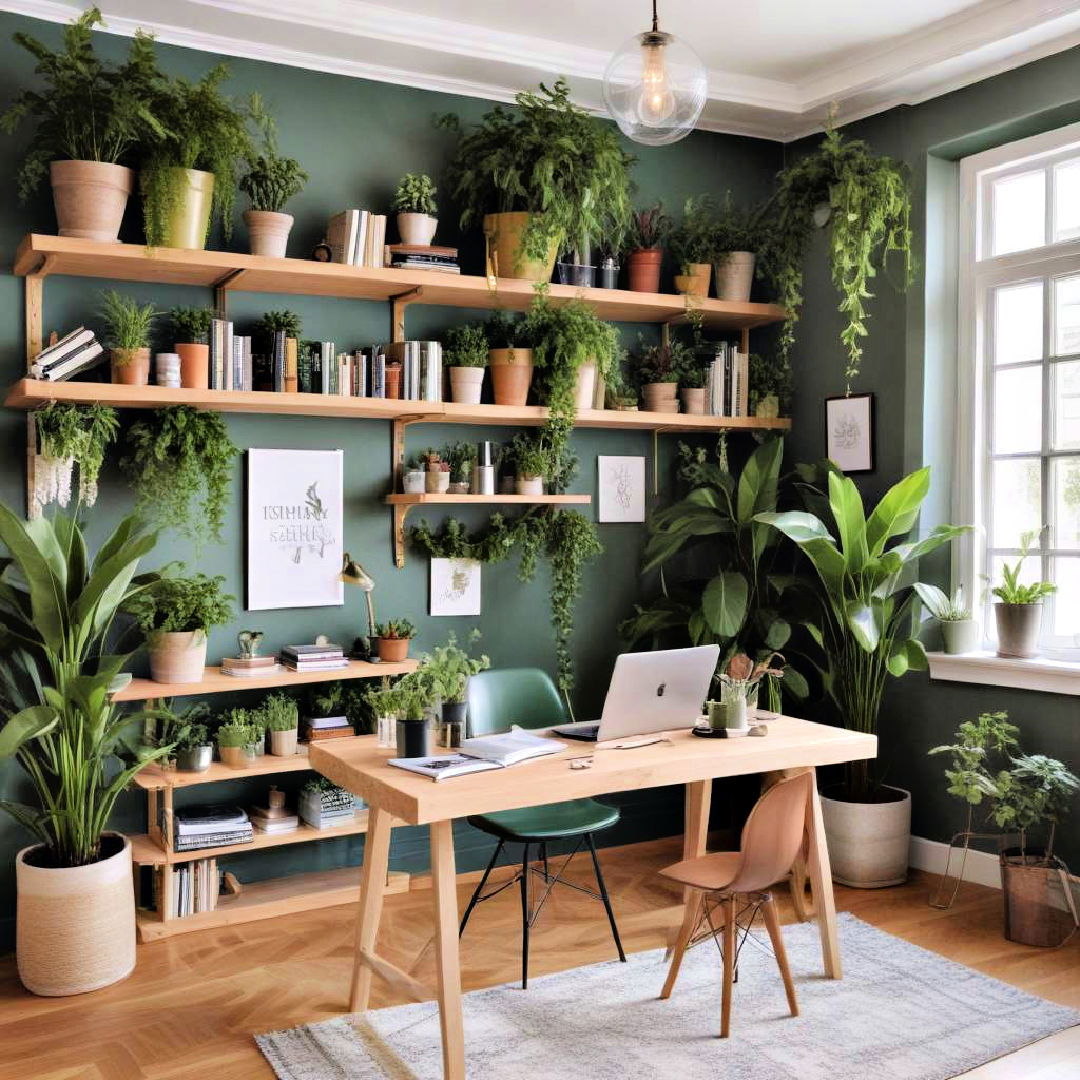
Get inspired by creative study room ideas for a perfect work or study environment. Introduce greenery and indoor garden ideas to your study room for a refreshing touch. Plants can purify the air and create a calming effect. Low-maintenance varieties like succulents or spider plants require minimal care but can significantly improve the ambiance and aesthetics of your study space.
9. Technology Integration
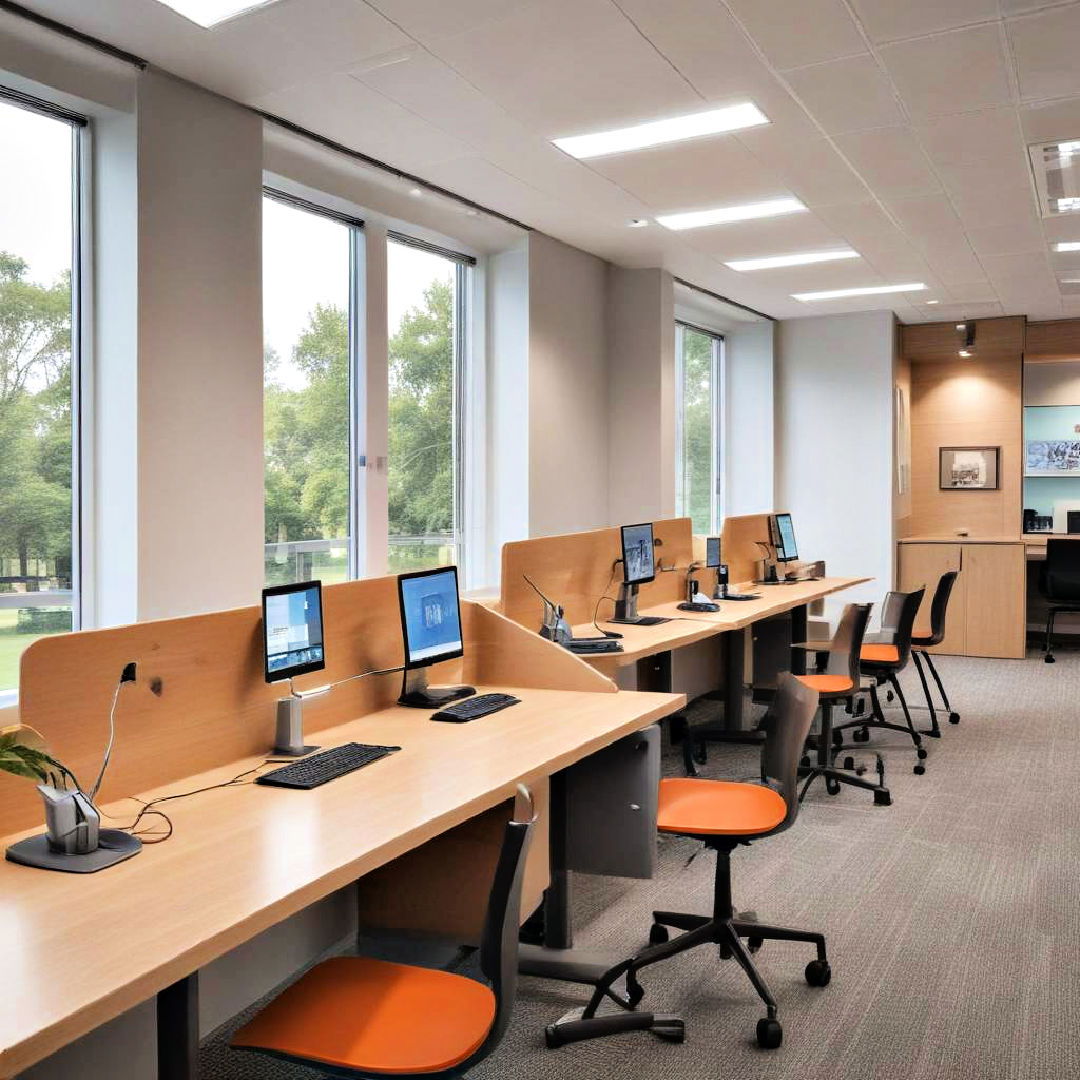
Seamlessly integrating technology can streamline your study process. Ensure easy access to charging stations, good Wi-Fi coverage, and ergonomic setups for your devices. Technology integration helps in maintaining an effortless workflow, making your study sessions more efficient and enjoyable.
10. Modular Furniture

Opt for modular furniture for flexibility and adaptability. Pieces like stackable shelves, foldable desks, or rolling carts can be rearranged as needed. This versatility allows your study room to evolve with your needs, providing a dynamic environment that supports various study activities.
11. Comfortable Seating Options
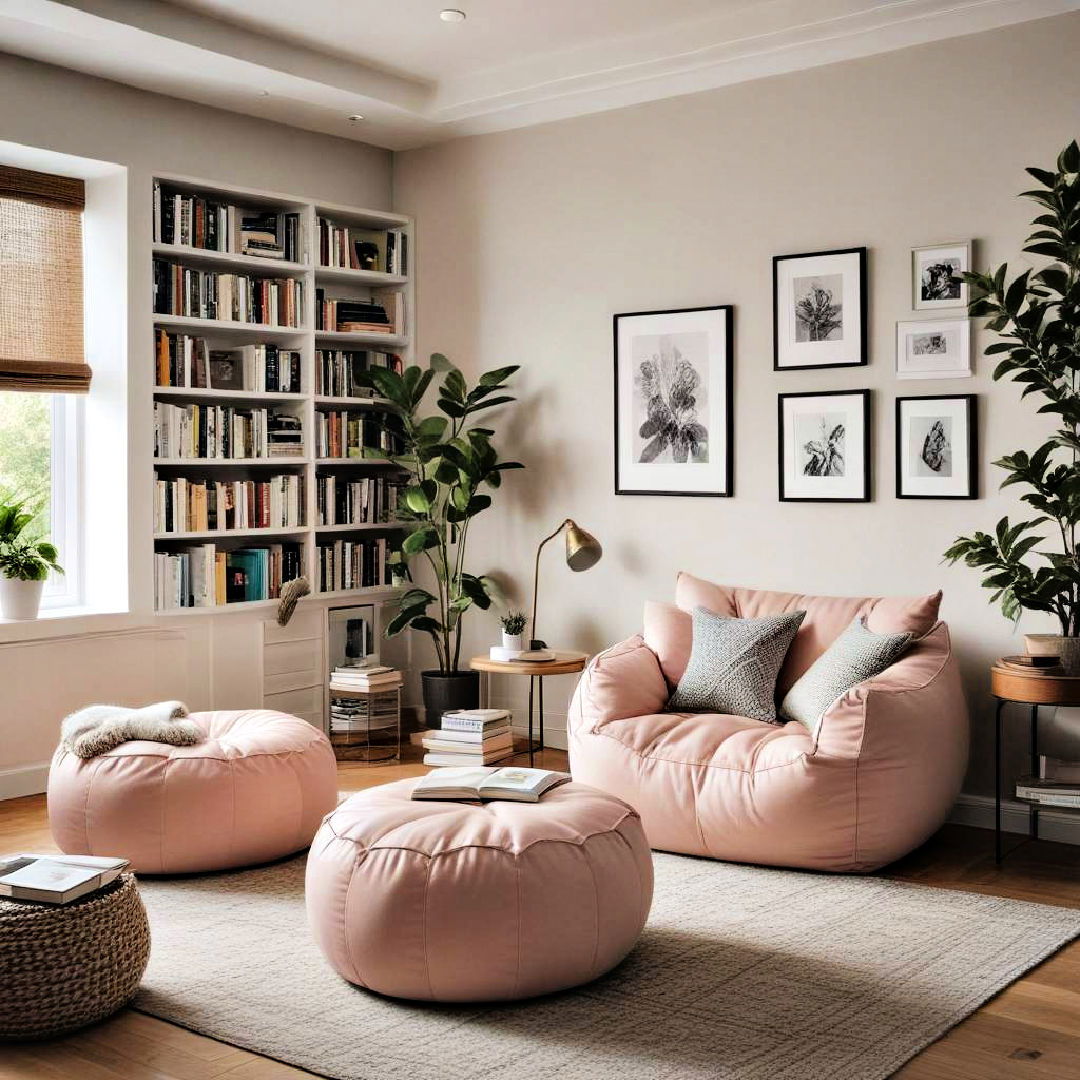
Think about incorporating various seating options. Having a cozy armchair or a beanbag inspired by cozy bedroom ideas can provide a relaxing spot for reading and brainstorming. Different seating styles can cater to different activities, helping you stay comfortable and energized while studying.
12. Inspirational Color Scheme
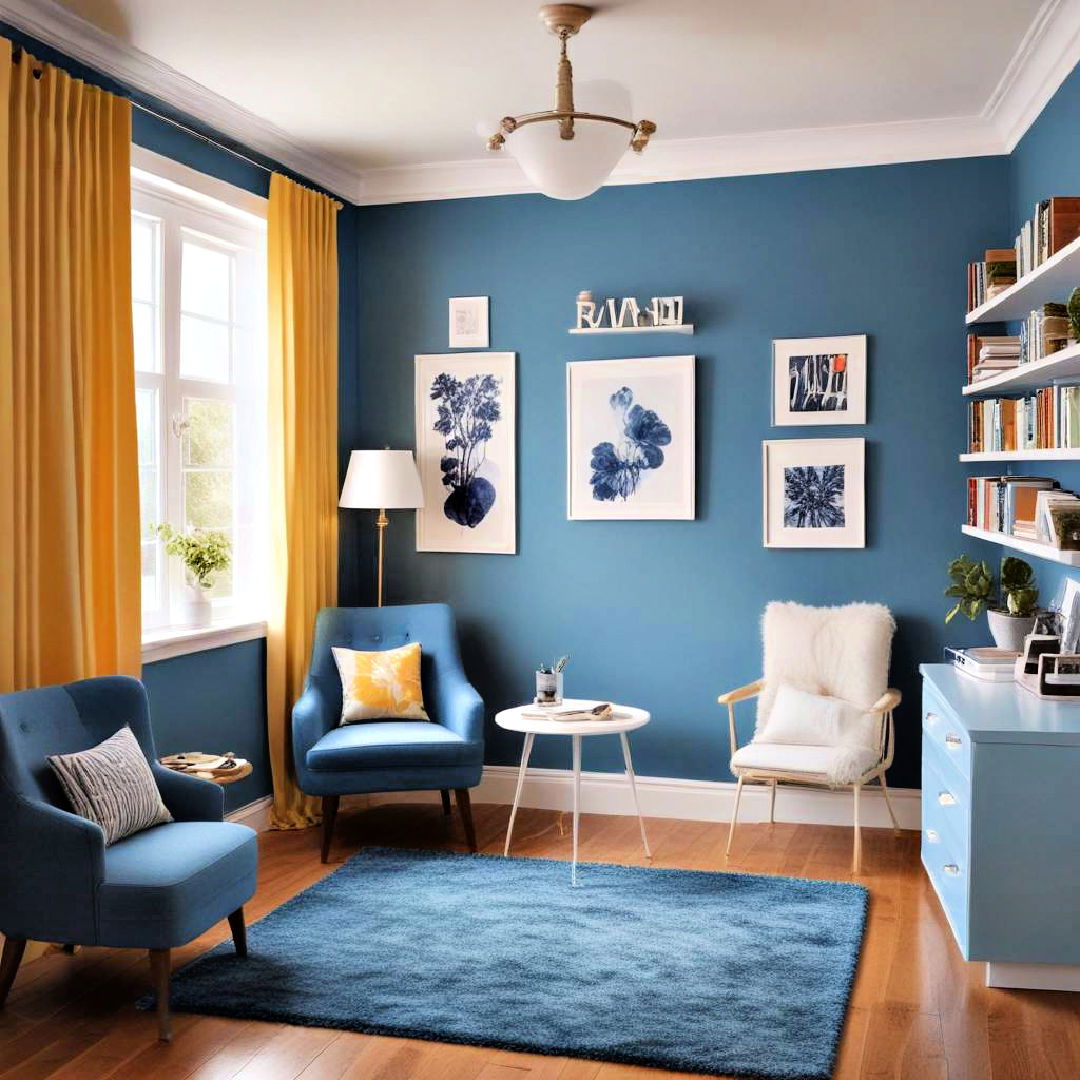
Consider choosing an inspirational color scheme. Colors like blue and dark green home office ideas are known for their calming effects, while yellow can boost creativity. Tailor the color palette to match your preferences and the mood you want to create, enhancing both comfort and concentration.
13. Multi-functional Desks
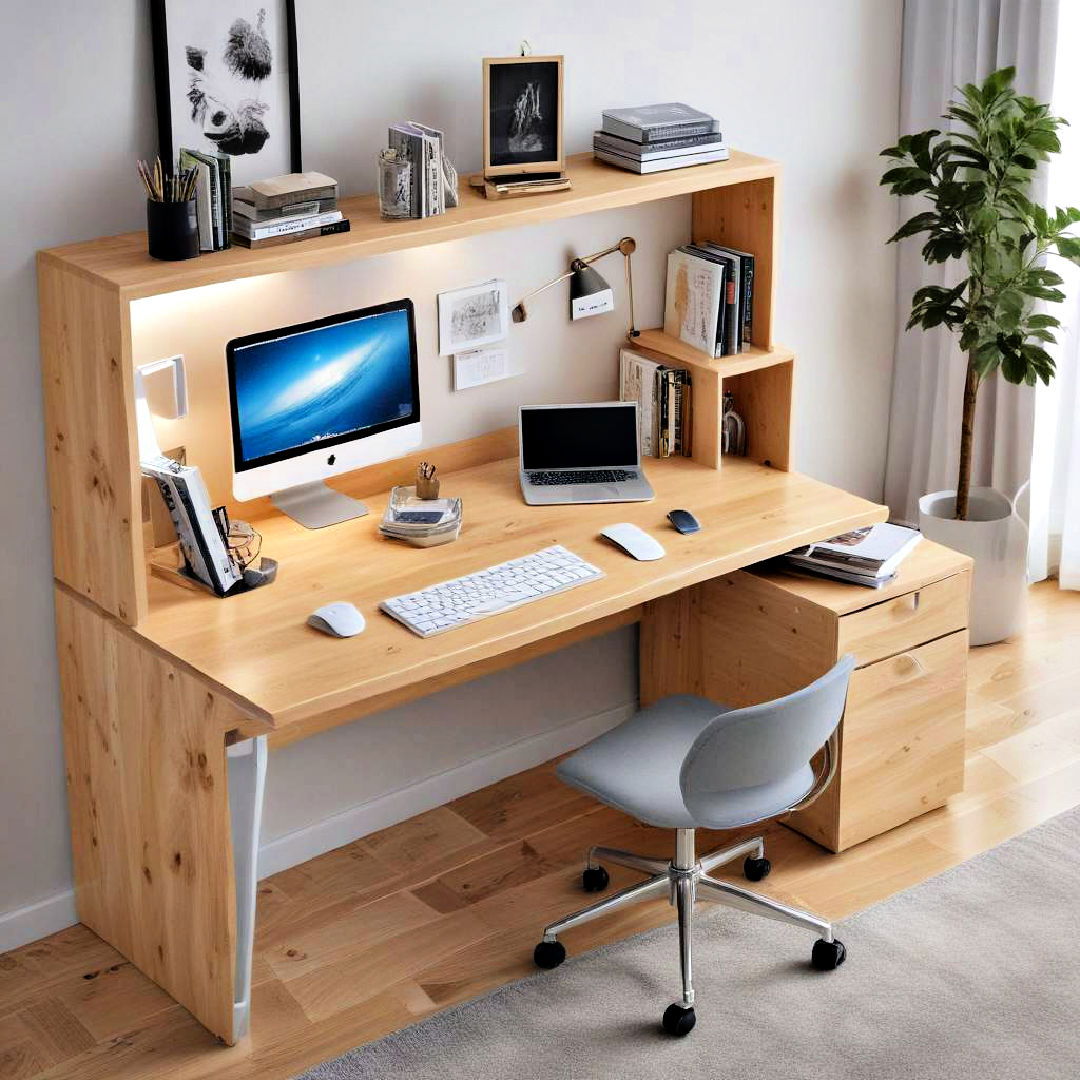
Consider multi-functional desks that offer more than one use. Desks with built-in storage or convertible designs can save space and help you stay organized. These versatile options can adapt to various study needs, making your study room more practical and efficient.
14. Theme-based Decor
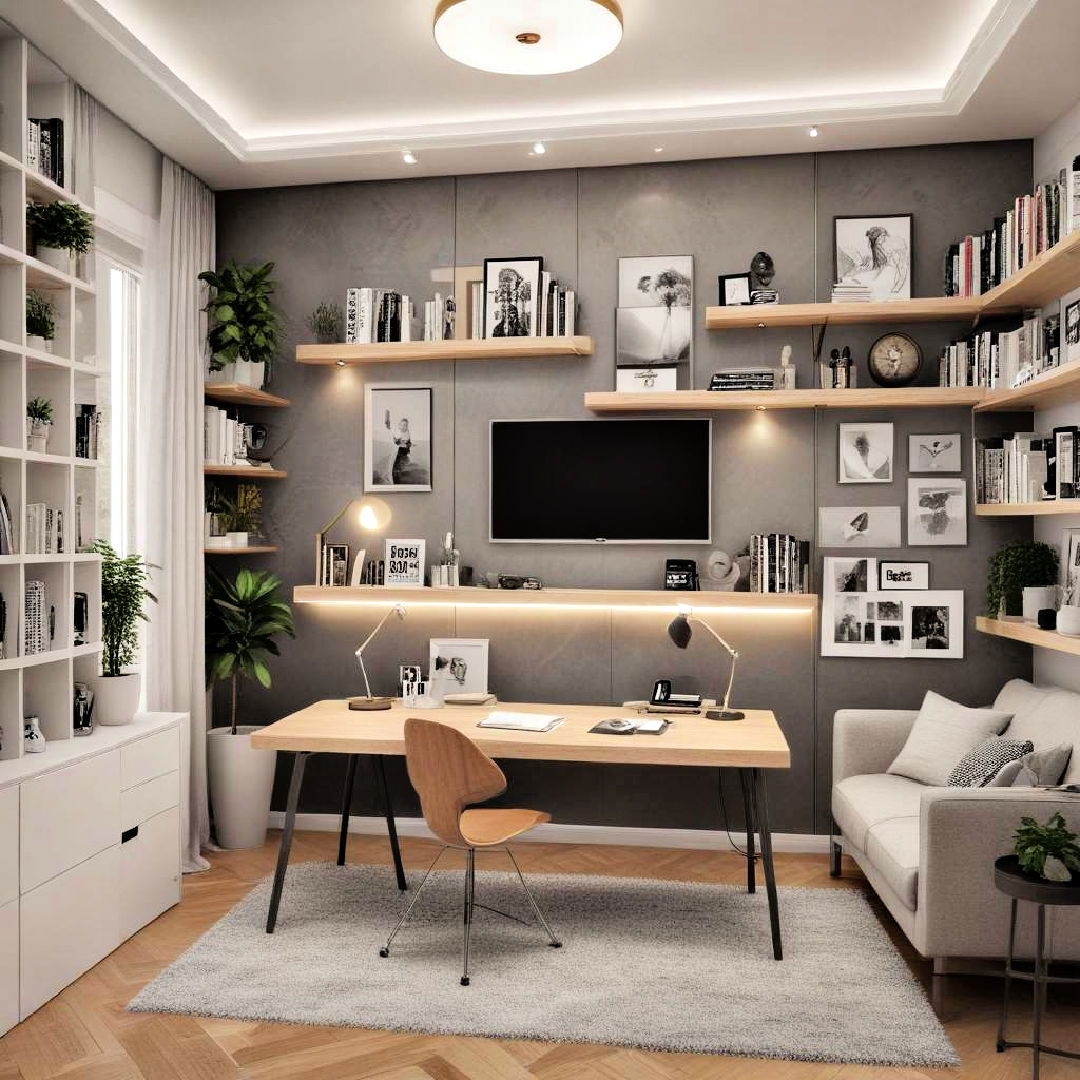
Enhance your workspace with modern and minimal study room decor. How about a theme-based decor for a cohesive look? Whether it's vintage, modern, or nature-inspired, a cohesive theme can make the space unique and inviting. This approach ensures all elements work together harmoniously, boosting your mood and productivity.
15. Interactive Whiteboards

Install an interactive whiteboard to enhance your study sessions. Perfect for jotting down notes, brainstorming, or planning, whiteboards can be a dynamic addition to any study room. This tool helps visualize ideas and keeps you organized, facilitating a more interactive learning environment.
16. Aromatherapy Elements

Integrate aromatherapy elements to create a soothing atmosphere. Essential oil diffusers with scents like lavender or eucalyptus can help reduce stress and increase focus. Aromatherapy can transform your study room into a tranquil oasis, making studying a more pleasant experience.
17. Personalized Study Nook
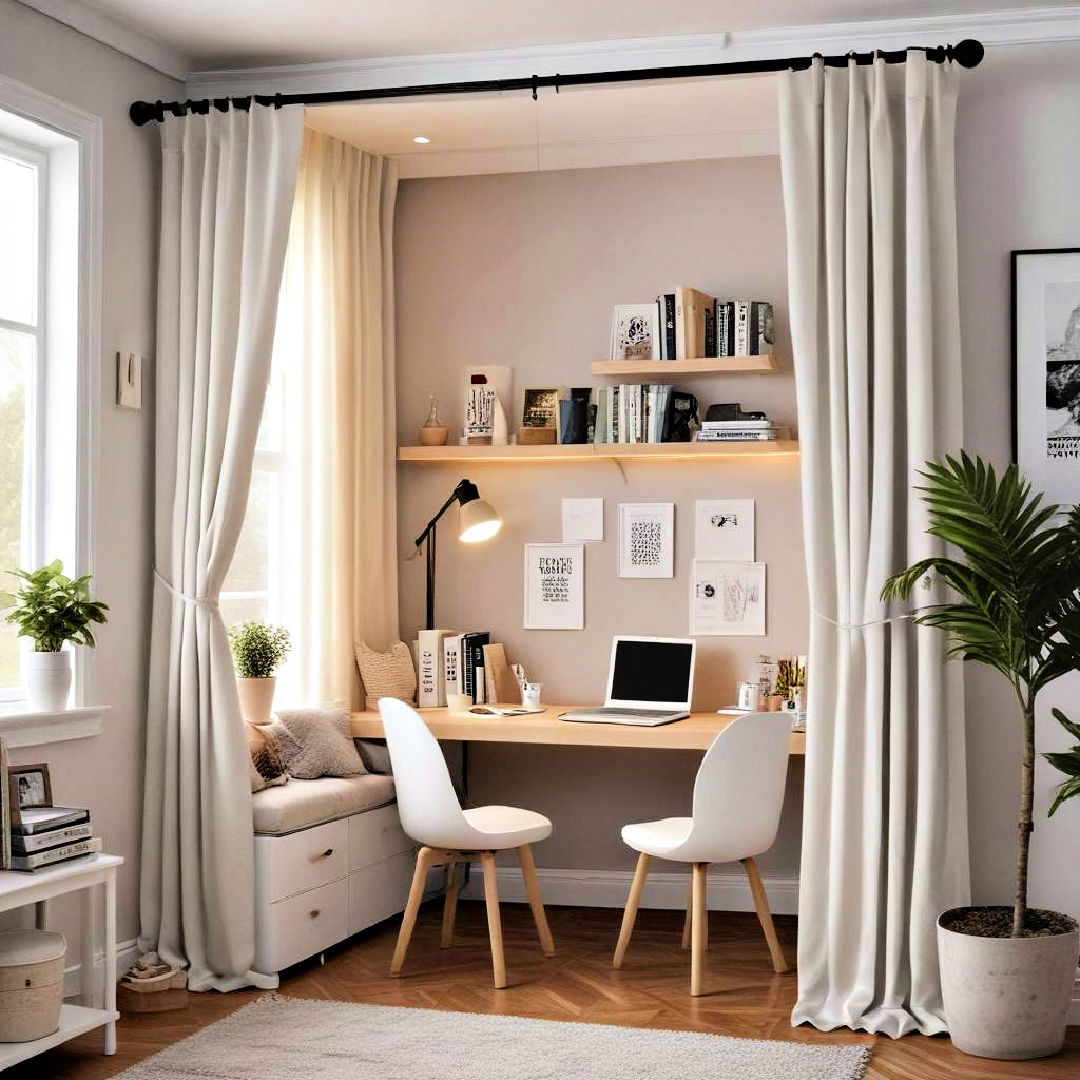
Create a personalized study nook within your room. Use curtains or partitions to carve out a quiet corner dedicated solely to studying. This defined space can help you mentally transition into a focused mindset, making your study sessions more productive.
18. Shelving Units
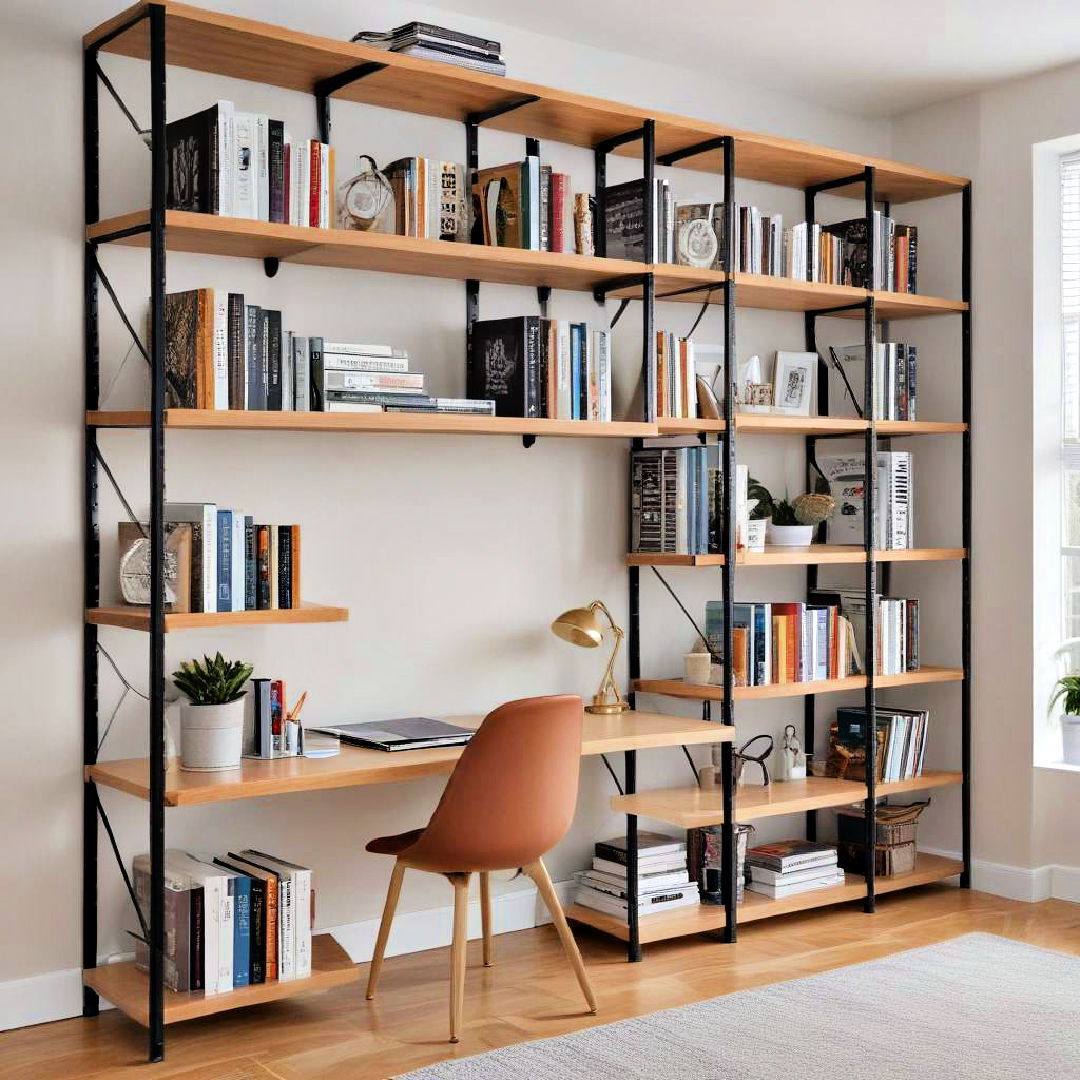
Install versatile bedroom shelving ideas to accommodate books, supplies, and decor. Open shelves allow for easy access, while closed cabinets can hide clutter. Well-designed shelving units maximize vertical space, keeping your study area organized and aesthetically pleasing.
19. Bulletin Boards

Add a bulletin board for keeping important reminders, deadlines, and motivational quotes visible. This practical feature helps you stay organized and keeps useful information within reach. It can also serve as an inspirational collage, making your study space more lively and functional.
20. Acoustic Panels
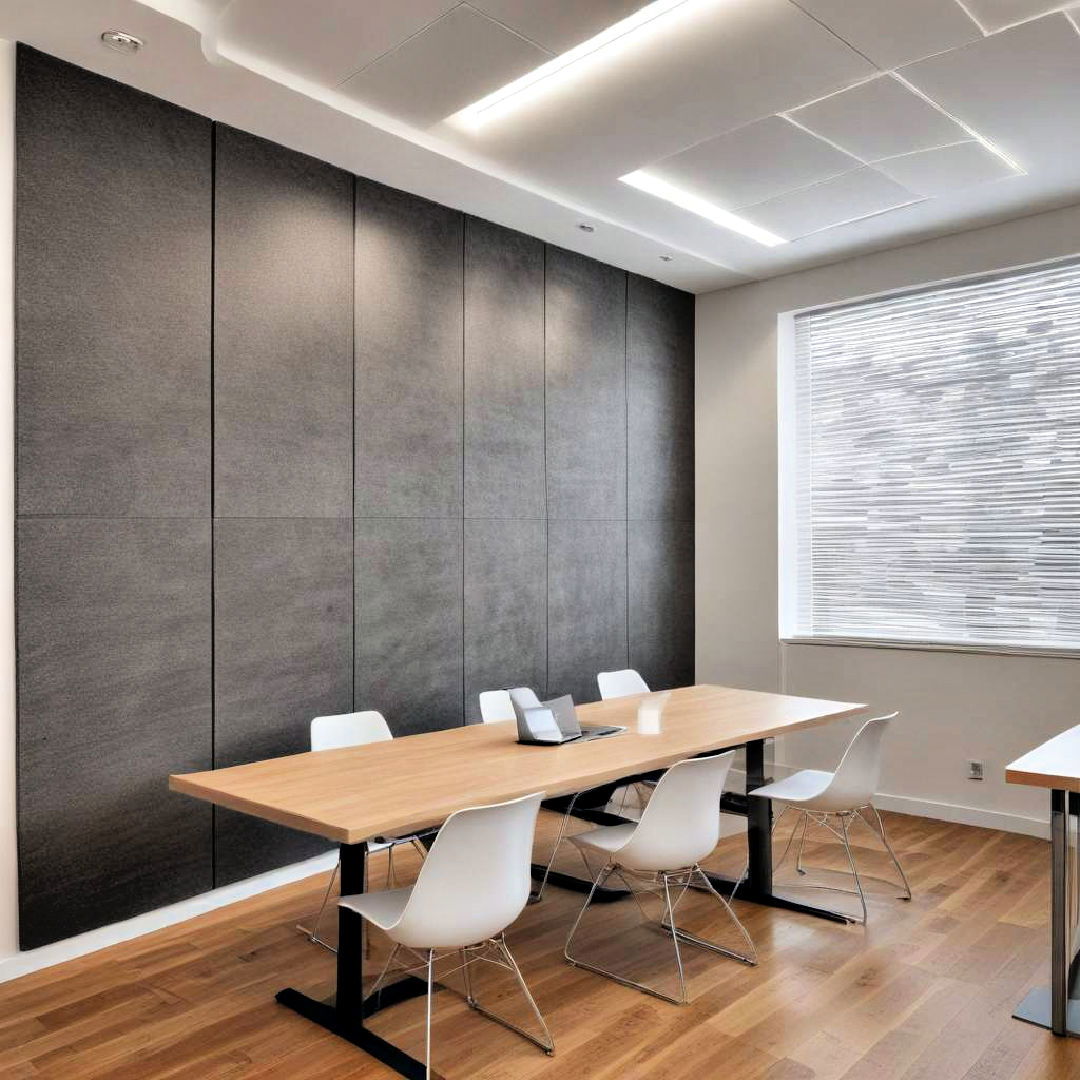
Explore unique and practical study room decoration ideas to boost focus. Consider acoustic panels to reduce echo and enhance sound quality. Ideal for online learning or video calls, these panels can greatly improve your audio experience. Acoustic panels create a more conducive study environment by minimizing distractions and improving focus.
21. Dedicated Study Zones
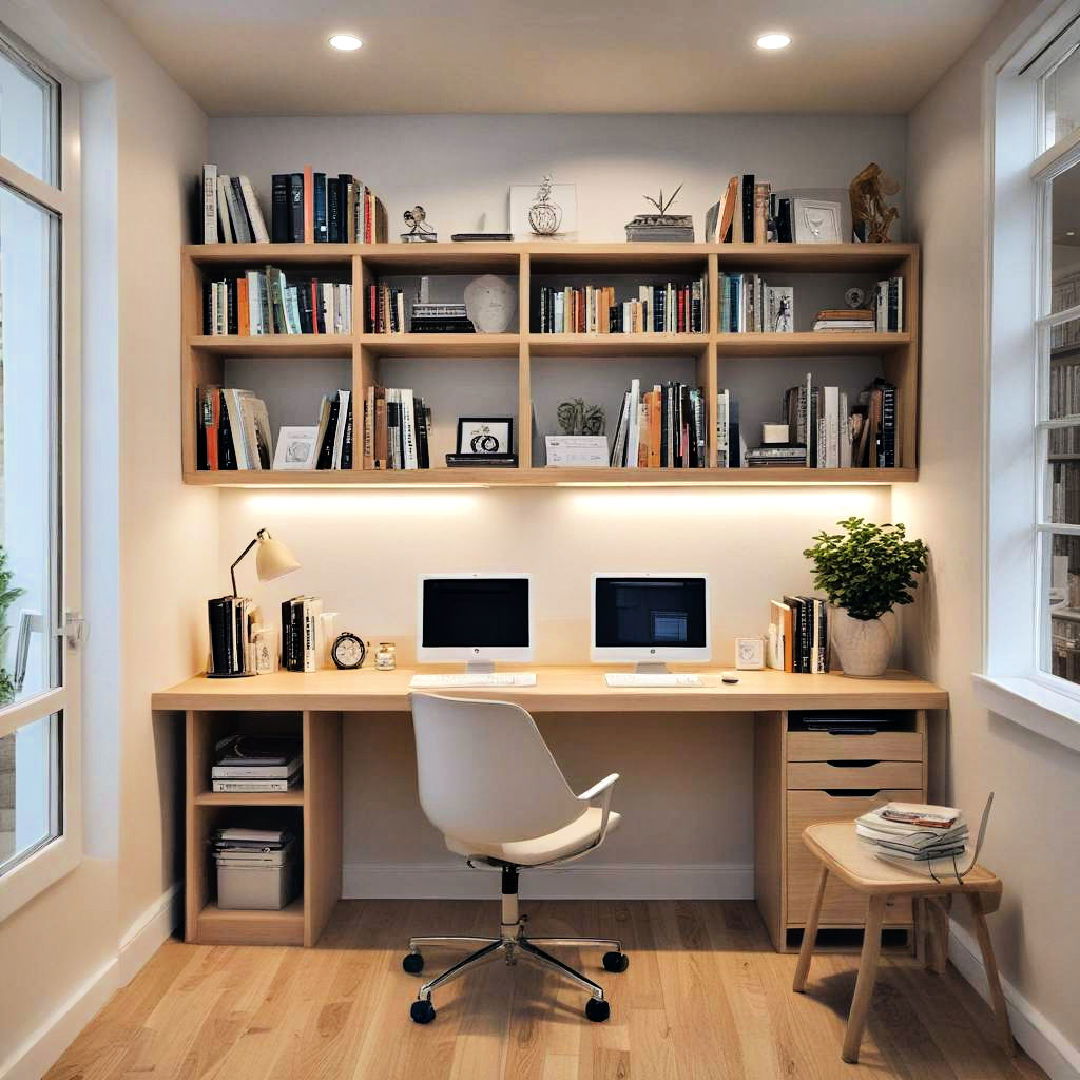
Create dedicated study zones for different activities by exploring bedroom layout ideas. A specific area for reading, another for computer work, and a separate space for brainstorming can keep tasks organized. This compartmentalization helps in maintaining focus and promotes an efficient workflow.
22. Inspirational Books
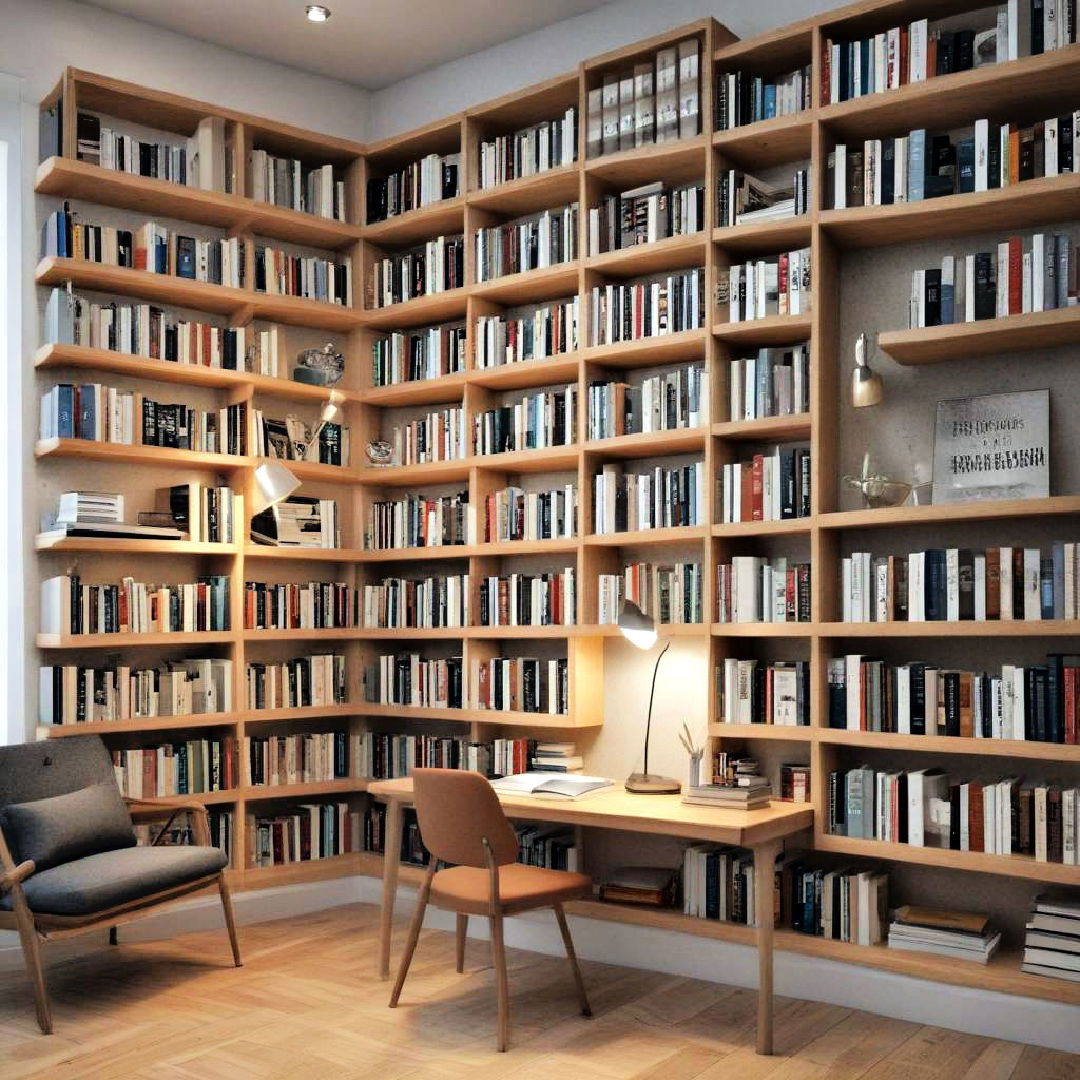
Think about including a selection of inspirational books within easy reach. Whether they're reference materials or motivational reads, having them nearby can provide quick access to information and a mental boost when needed. This simple addition can enhance both learning and inspiration.
23. Sound System
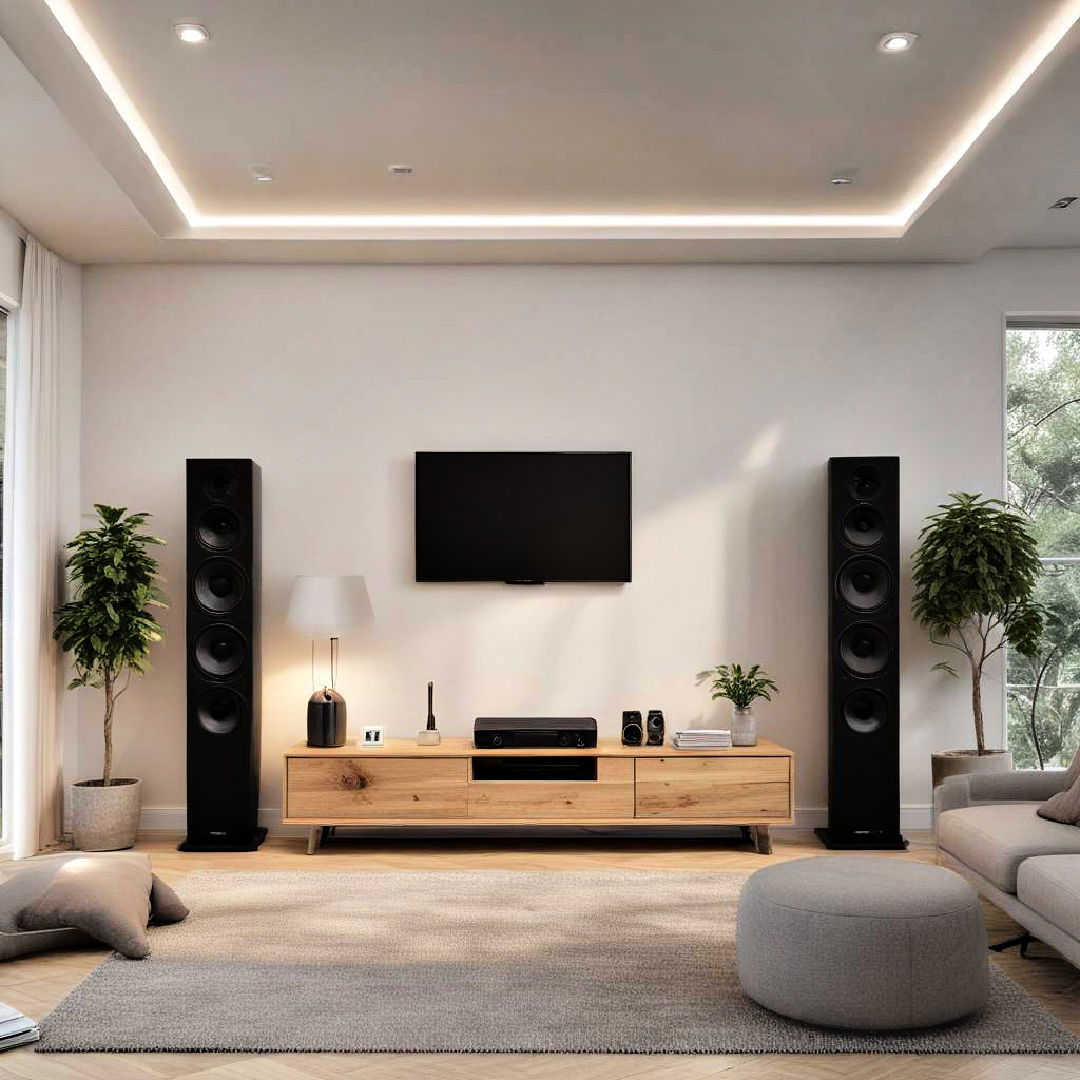
Incorporate a quality sound system for ambient music or focus-enhancing background sounds. The right audio environment can improve concentration and make study sessions more enjoyable. Choose soothing instrumental tracks or white noise to create a calming study atmosphere.
24. Adjustable Shelves
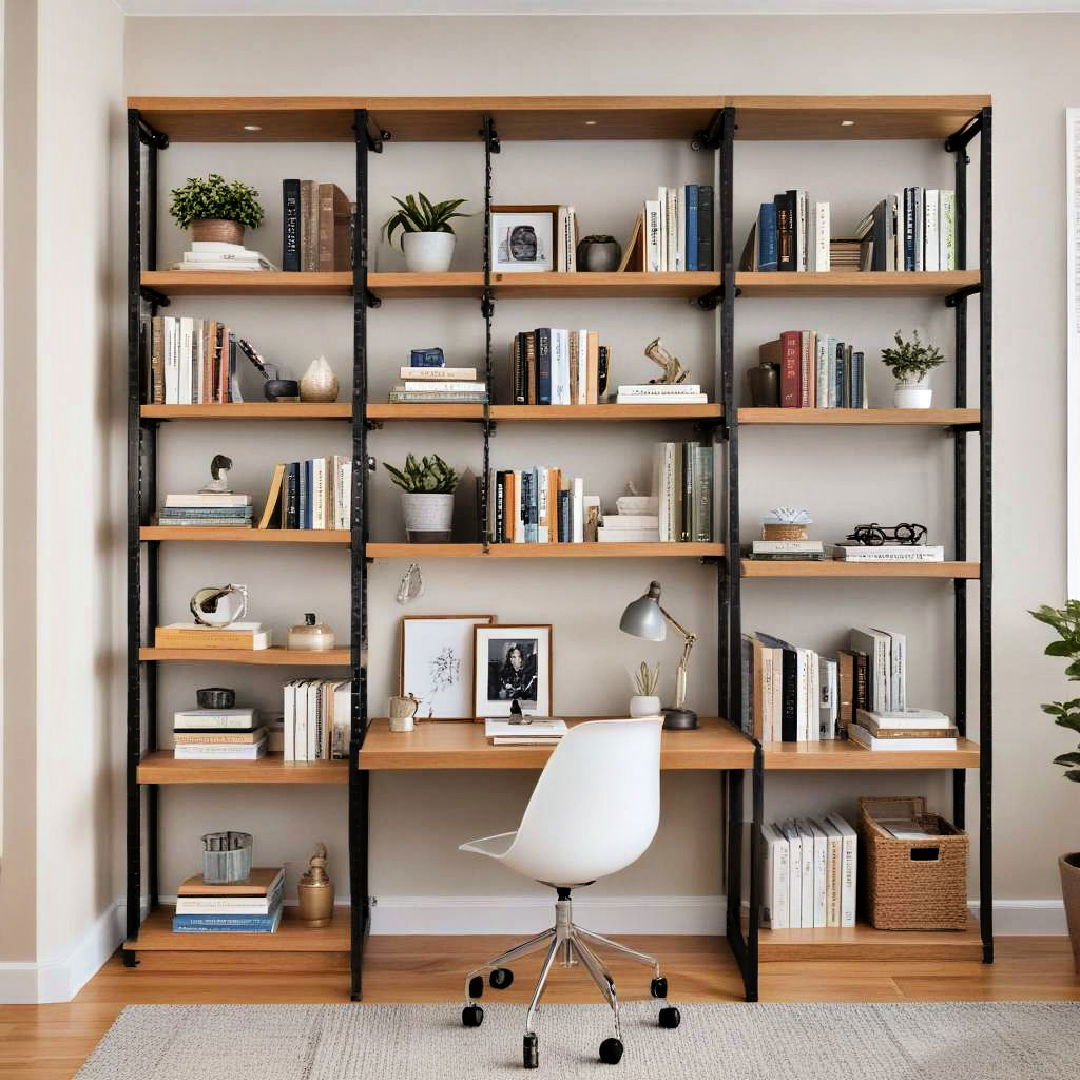
Find the best study room design ideas to create an organized and motivating space. Install adjustable shelves and consider bedroom accent wall ideas for a customizable storage solution. These shelves can be reconfigured to accommodate different book sizes or study materials over time. Their flexibility allows you to optimize storage space, ensuring a clean and organized study environment.
25. Art and Creativity Corner
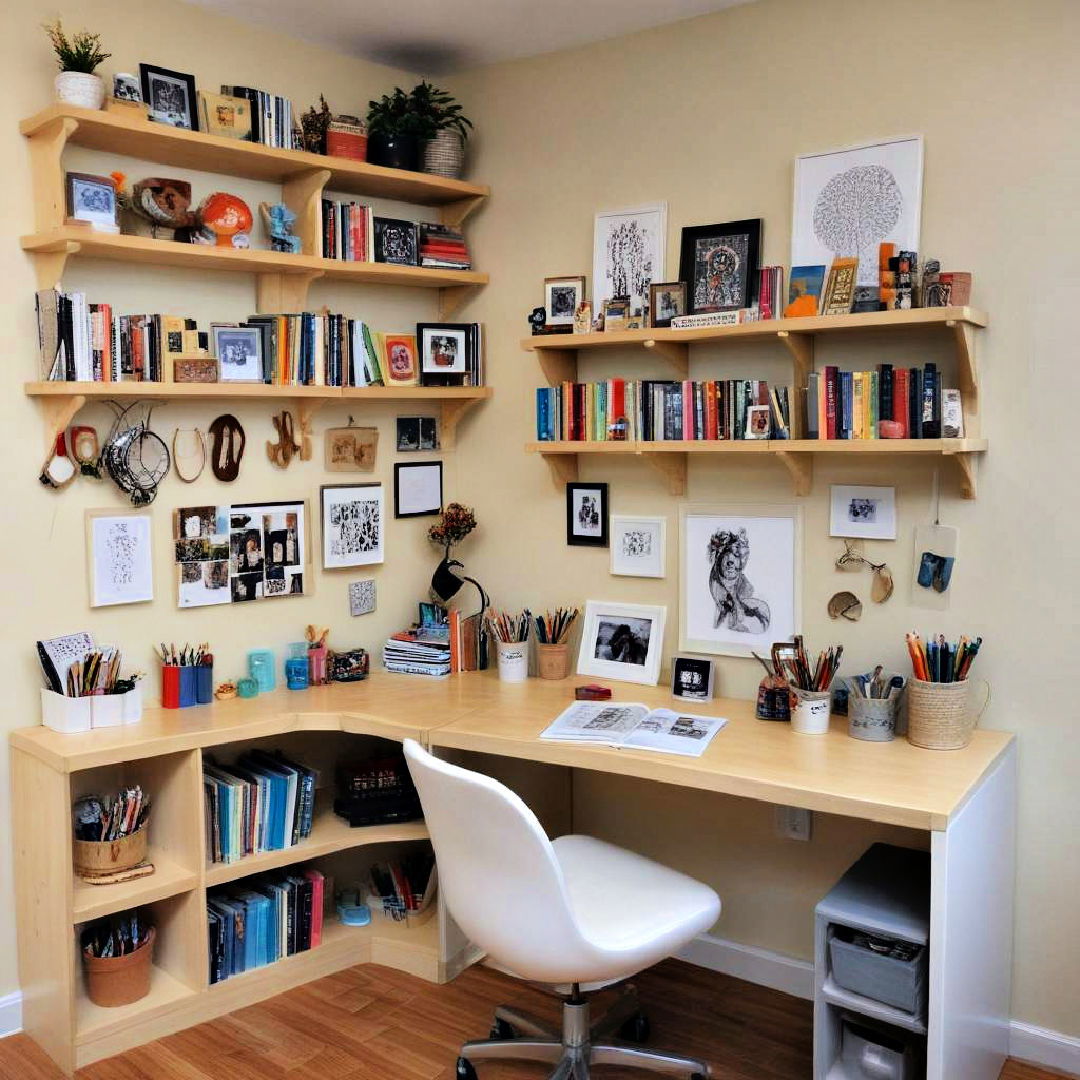
Dedicate a small corner for art and creativity. Whether it's a sketchpad, coloring materials, or a small easel, this space can serve as a break area to unwind and recharge. Engaging in creative activities can boost your overall productivity and keep you motivated.
Conclusion:
Designing a study room that fuels your creativity and productivity involves more than just stylish furniture—it's about blending functionality with your personal touch. By incorporating elements like ergonomic seating, clever storage, and an inspiring color palette, you create a workspace that's not only efficient but also enjoyable. Whether it's through modular desks, greenery, or personalized decor, these ideas ensure your study room becomes a hub of motivation and focus, enhancing your daily routines.
Key Points:
- Natural Light and Lighting: Prioritize natural light for focus and adjustable lighting for flexibility during study sessions.
- Ergonomics and Comfort: Invest in ergonomic furniture and comfortable seating to support long study hours without strain.
- Minimalism and Organization: Keep the design minimalist with ample storage solutions to reduce clutter and enhance productivity.
- Personalization and Inspiration: Add personalized decorations, inspirational colors, and themed elements to make the space uniquely motivating.
- Greenery and Sensory Elements: Incorporate plants and aromatherapy to create a calming environment that promotes concentration.
- Technology and Adaptability: Integrate technology seamlessly, using modular furniture and multi-functional desks to adapt to changing needs.
- Sound Control: Use noise-reduction techniques like acoustic panels and sound systems to maintain focus in the study area.
What to Do Next:
- Assess Your Space: Identify the study area's size and lighting conditions to decide on suitable furniture and decor.
- Plan the Layout: Sketch a layout focusing on ergonomic placement, light sources, and potential areas for technology integration.
- Start Small: Begin with essential furniture pieces like desks and chairs, then gradually add personalized and sensory elements to enhance the space.
- Test and Adjust: Try out the setup to see how well it supports your productivity and comfort, and make changes as needed for optimal results.

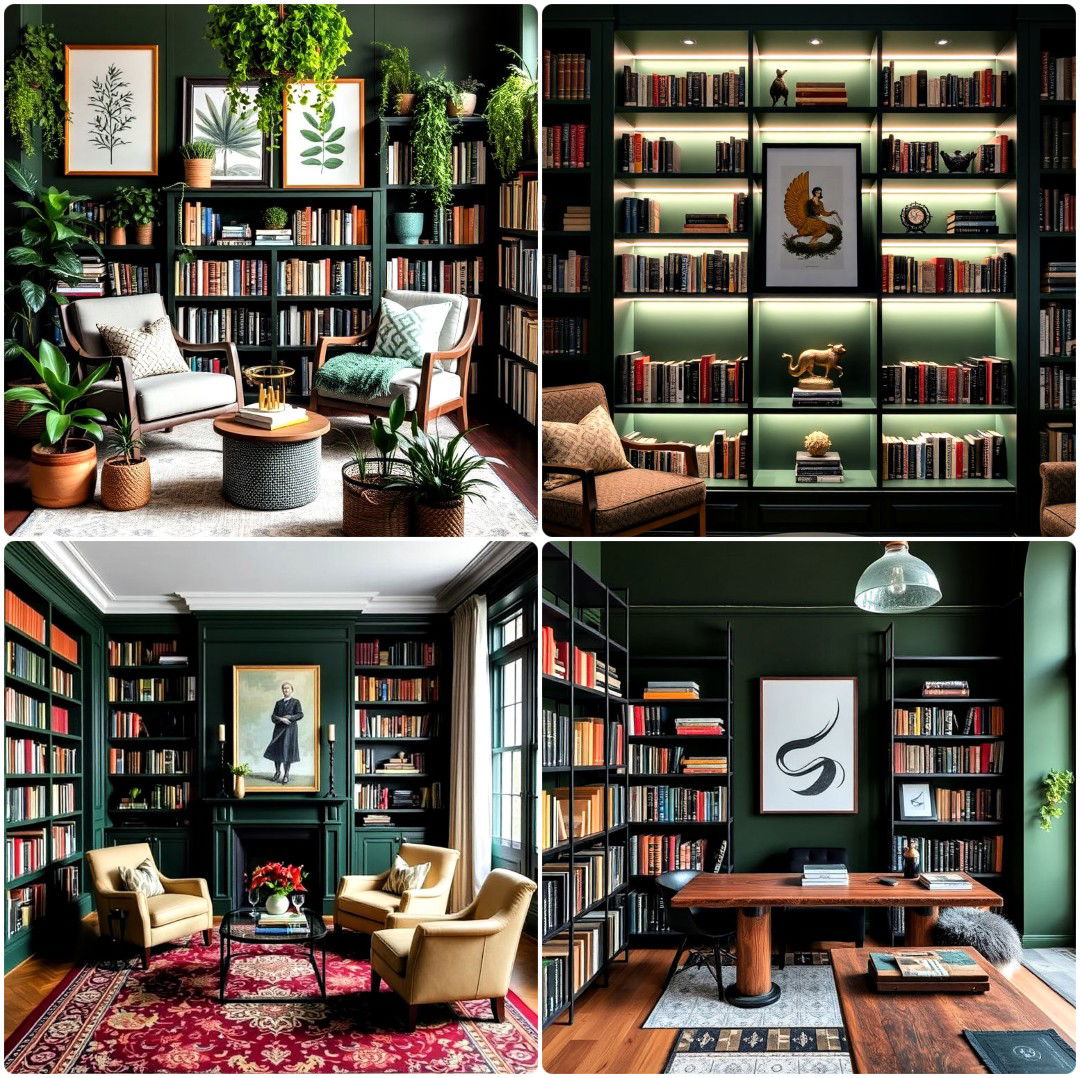
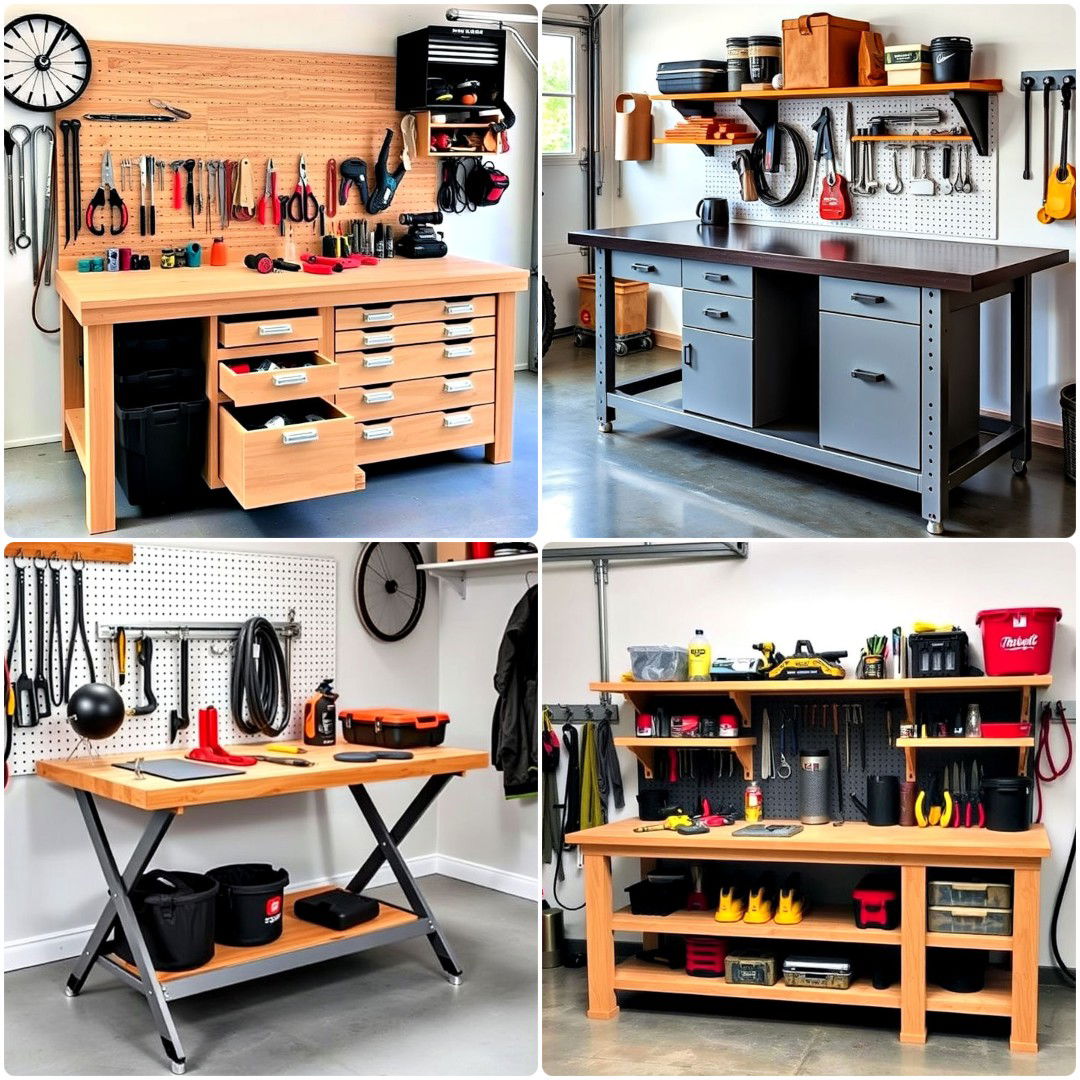


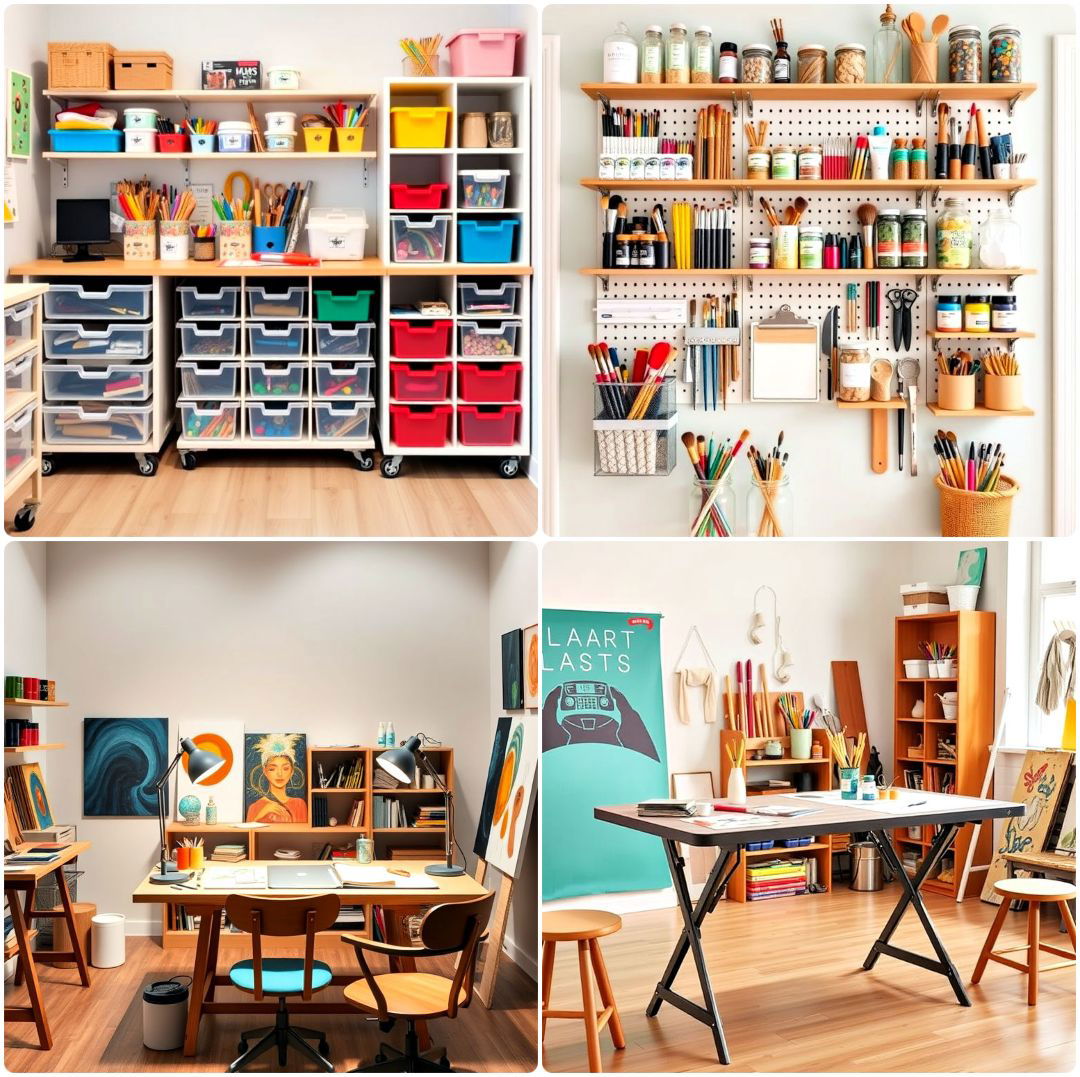
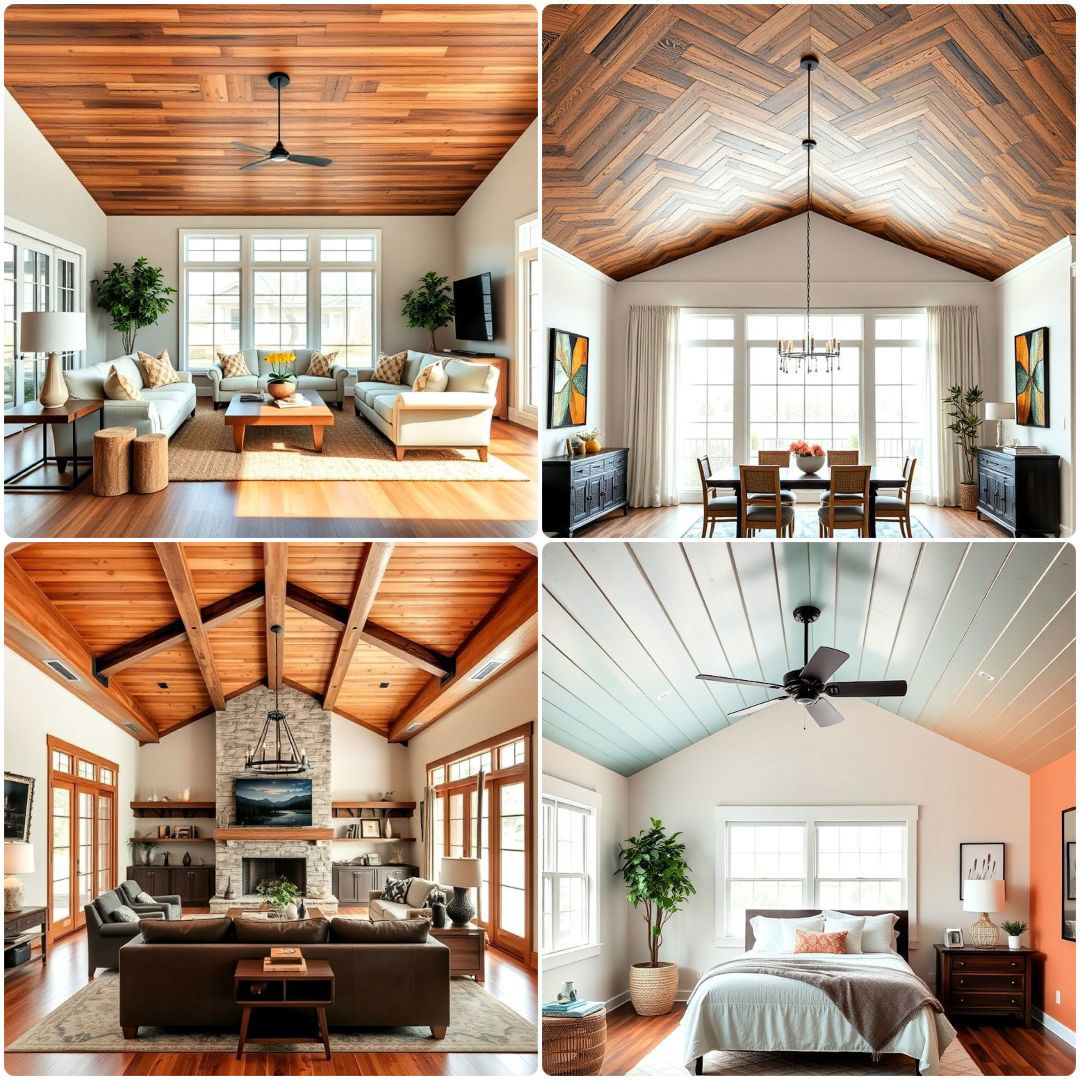
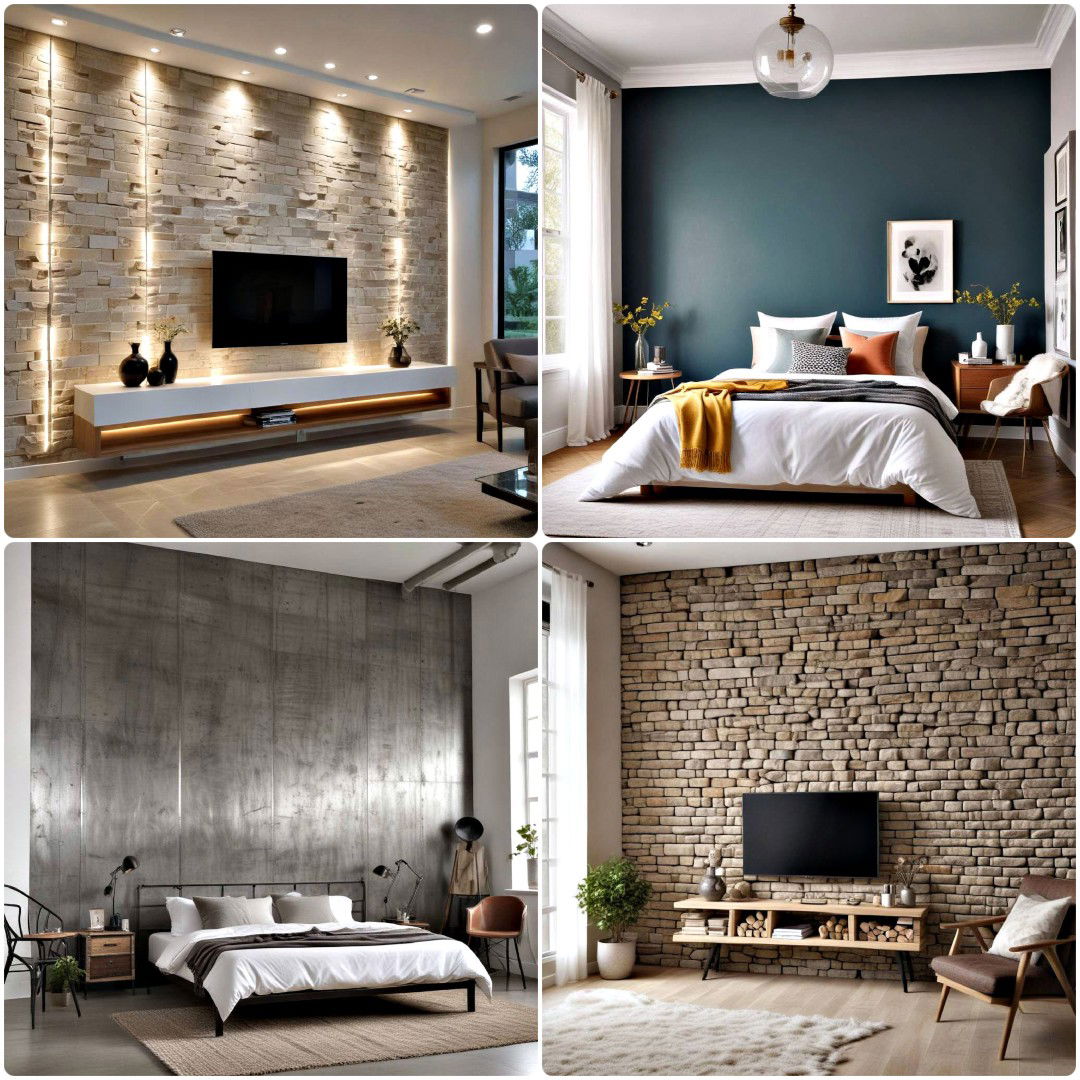
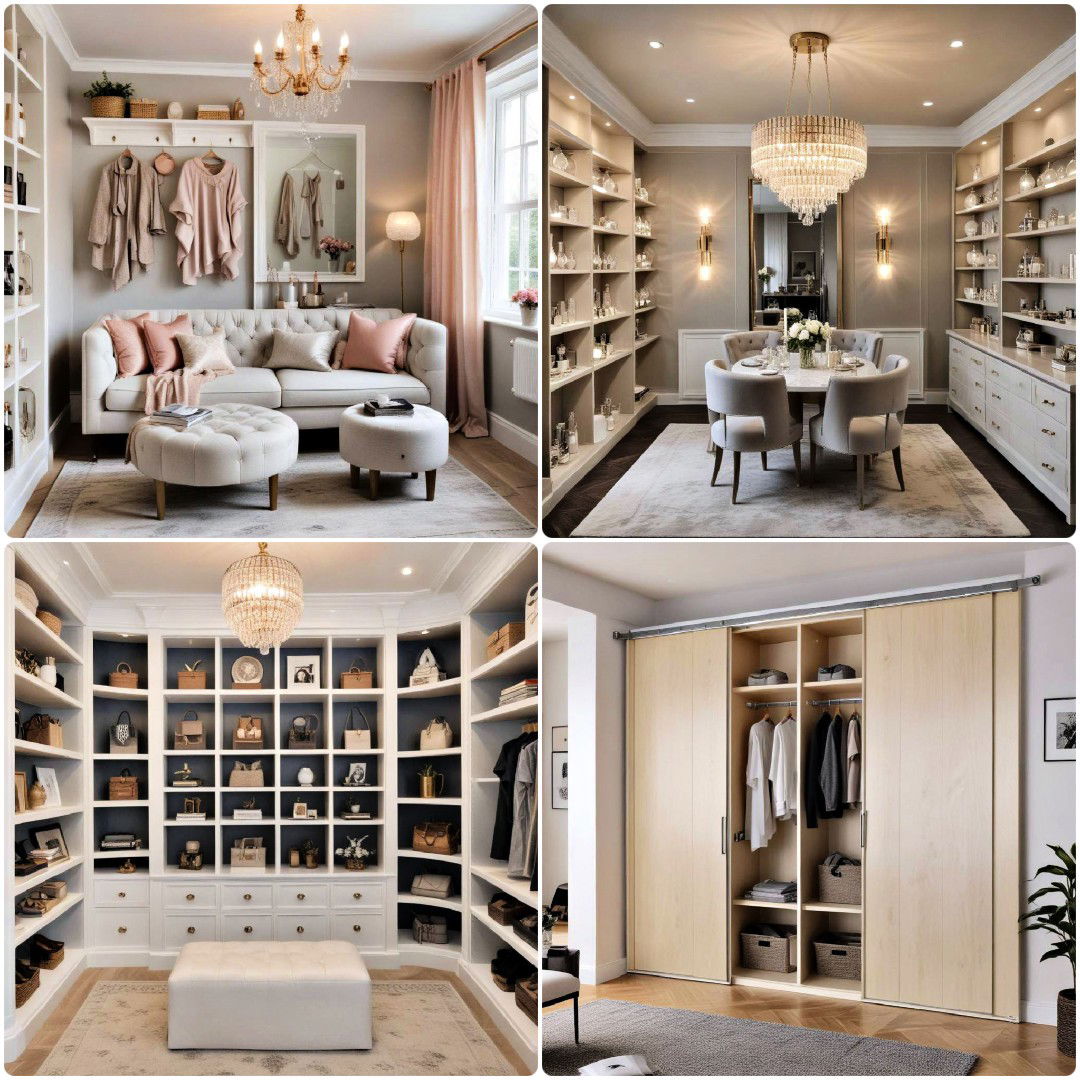
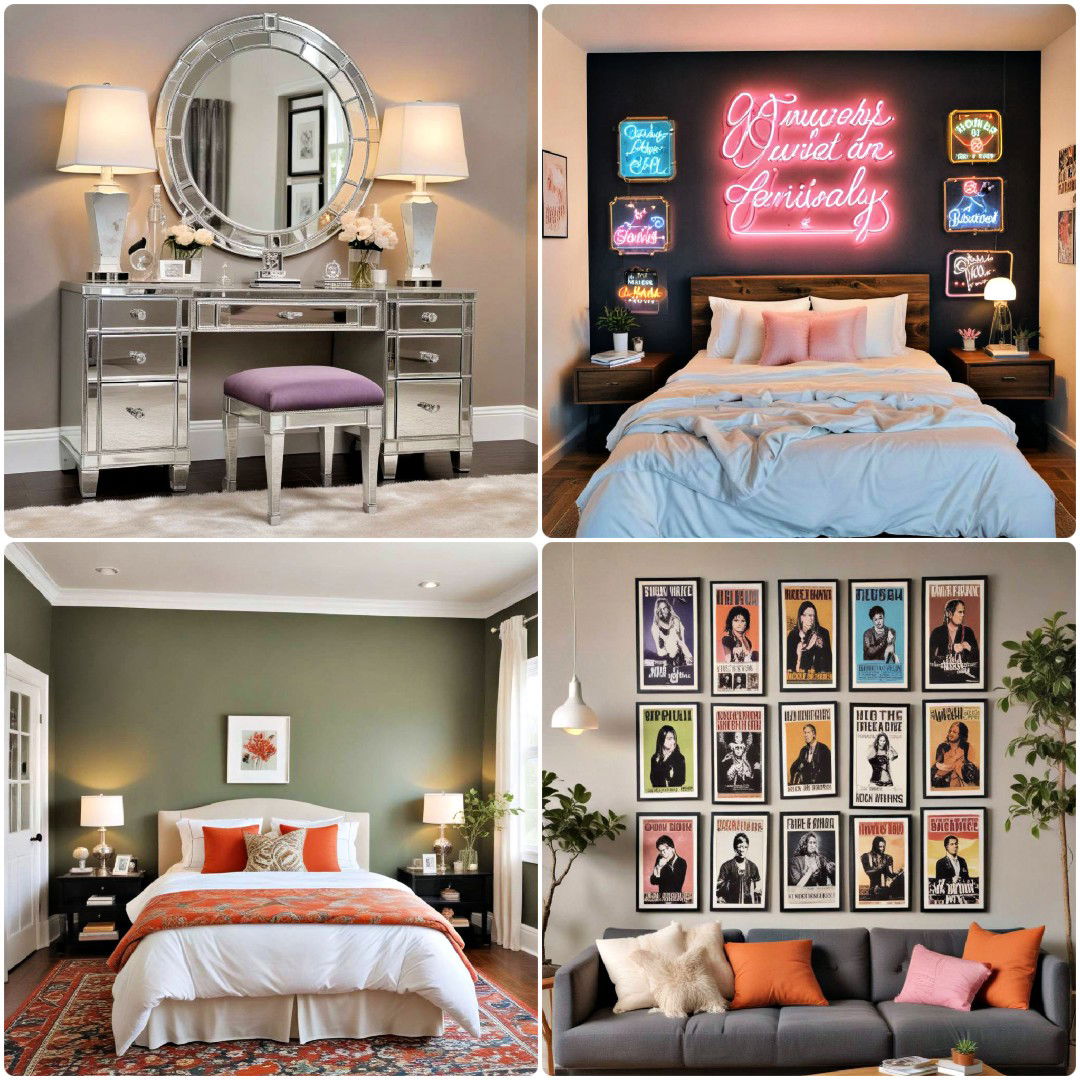

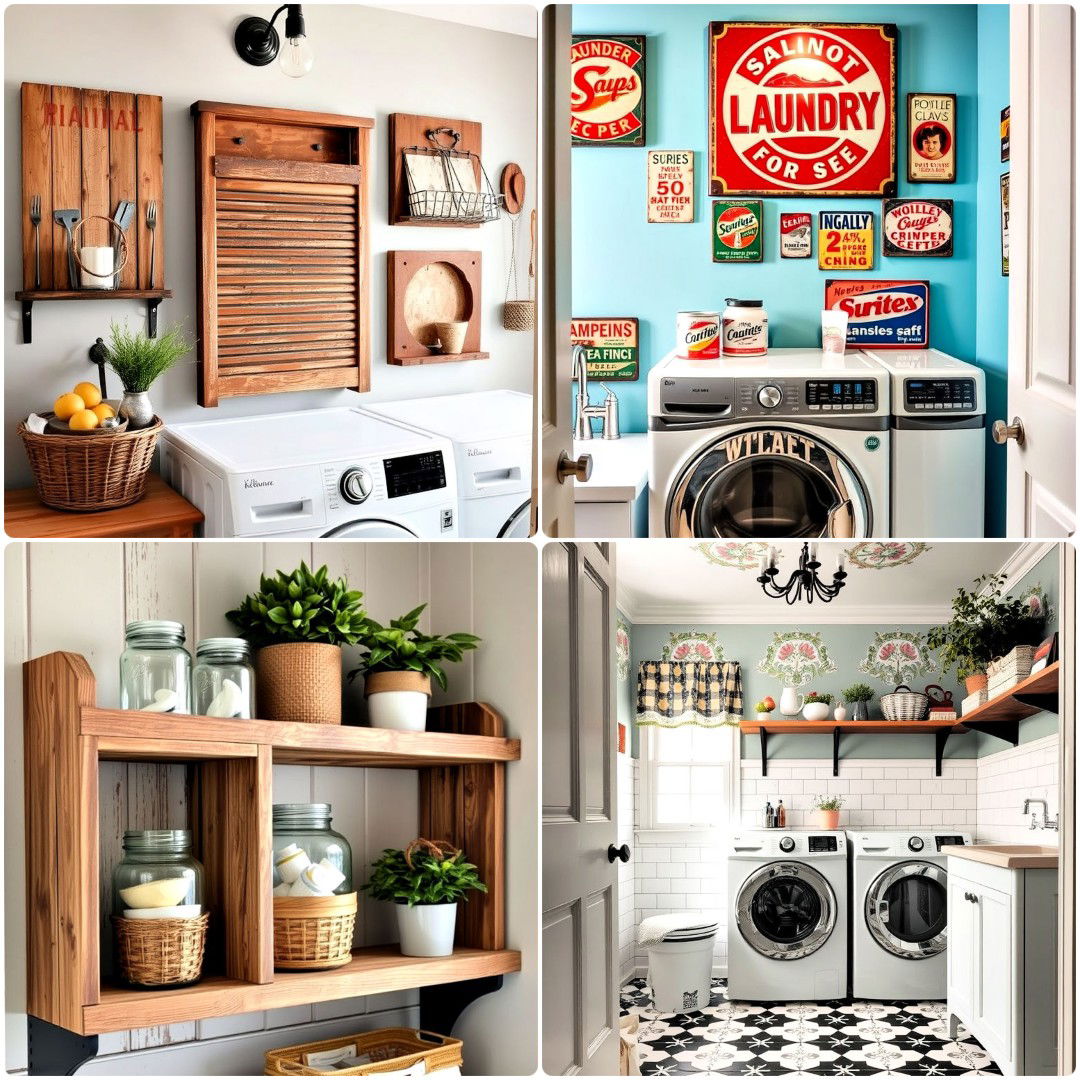
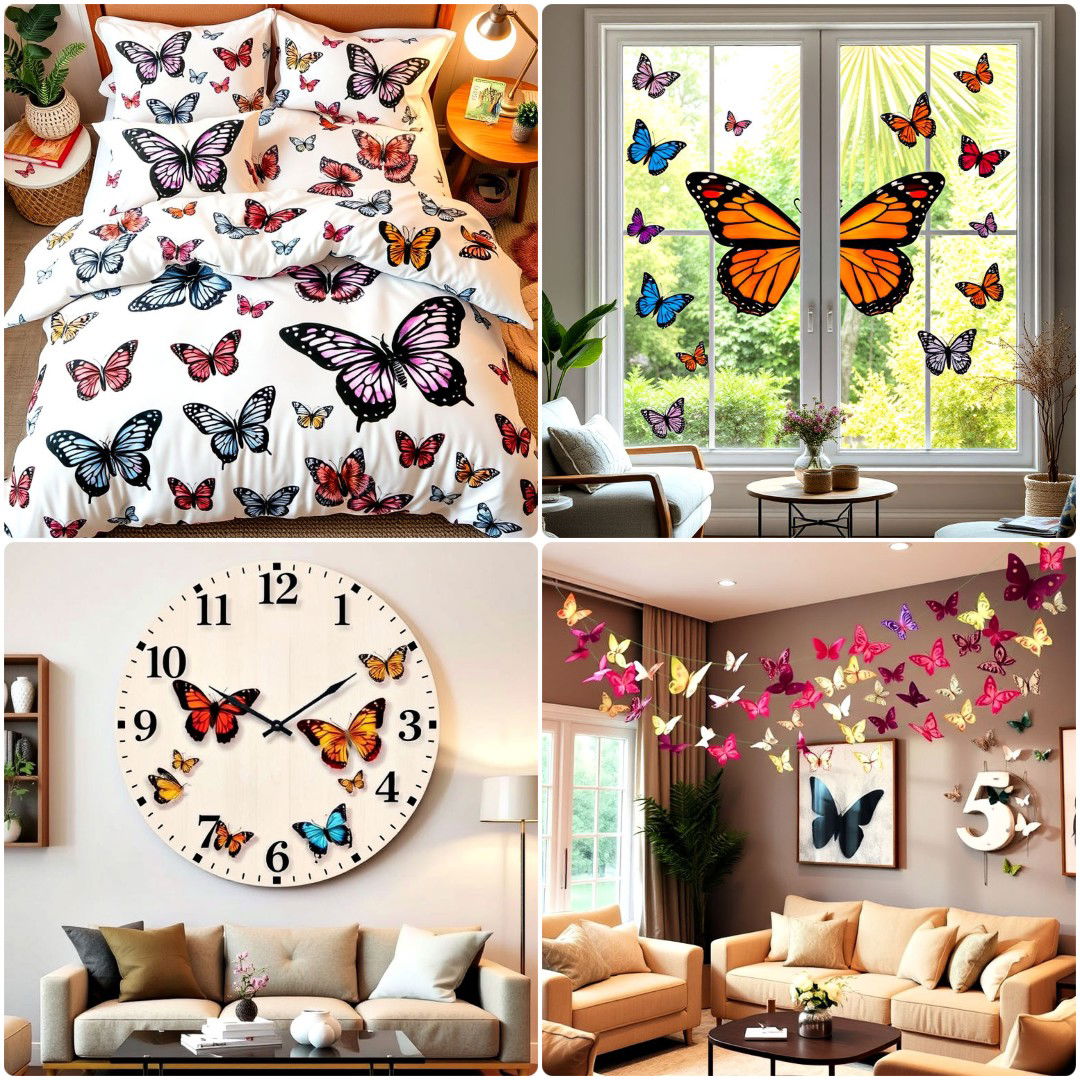
Leave a Reply